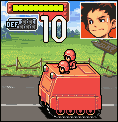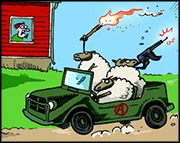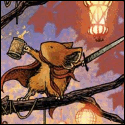|
Glad to see the LP back, I'm enjoying this (also currently reading Lives of the Engineers). I was always a bit mystified at how popular Transport Tycoon games were. I'd go crazy managing all the routes in this game, if it was just you playing solo would you have ever bothered with the trunk-and-branch model?
|
|
|
|

|
| # ? May 23, 2024 13:19 |
|
Jaguars! posted:Time to kick 'er in the guts again. Hope y'all had a good break. There are many, many mods available for this game - which is usually great, but because there is a hard limit of 224 vehicles (that nobody seems to be able to get around) you kinda need to pick and choose what you put in the games you want to play. This especially sucks for me because I like to create trains that are similar to the ones you see in North America; usually long, mixed consists and multiple company's liveries. The limit really eats into the variety. But welcome back and all those formalities. Decoy Badger posted:if it was just you playing solo would you have ever bothered with the trunk-and-branch model? Route and vehicle management in Locomotion tends to become tedious towards the end of the game when you have hundreds of trucks and trains and planes running around. It doesn't help that you can't just send everything to a depot to wait and there is no auto-replace function. Instead you need to hunt each one down and do it manually. Also, for some reason things seem to wear out really fast in Locomotion, there's no reason a truck should breakdown every 8-10 seconds or why locomotives need replacing after only 10 years in service.
|
|
|
|
Psychotic Weasel posted:There are many, many mods available for this game - which is usually great, but because there is a hard limit of 224 vehicles... Decoy Badger posted:...would you have ever bothered with the trunk-and-branch model? PsyWeasel's description above is how I did things too. One thing I never quite did was a giant circuit with 3 or four lines with all the industry branches coming off of it. These days when I play I usually build several separate networks that hold trains of similar sorts, e.g a line that gathers all the iron and steel from one side of the map and feeds it to a steel mill on the other side, and then carts the goods to another side of the map. If I haven't done it by the end of this game, I'll do a game showing how to blitz the single player when you have lots of space and no compulsion to connect everything you can. No depots in this game was a great decision. Wish Sawyer had thought to allow broken down trains to be sold though, It's annoying to wait for them to be repaired when you're trying to replace a bunch of old rustbuckets. 1925-1929: Flying High and Stooping Low Locomotion Soundtrack - Chuggin' Along Click here to name a vehicle! 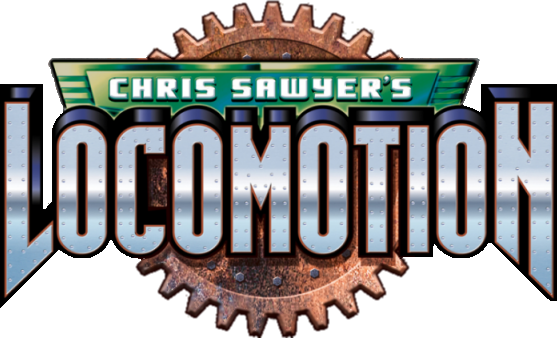 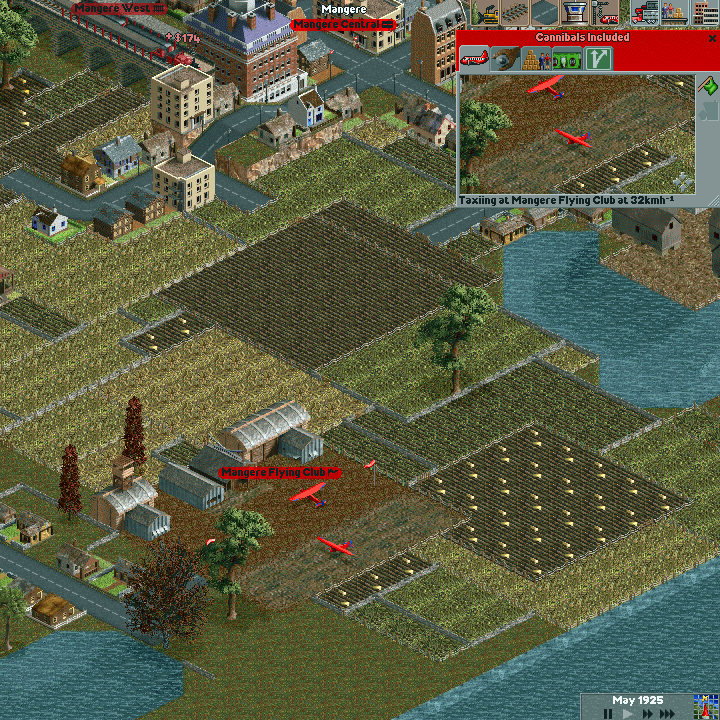 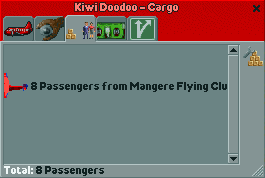 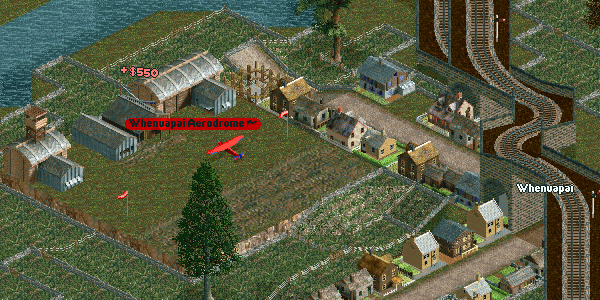 Scrooge uses two historic locations to form Auckland's second airline. He's right on the time when historic NZ's first three airlines went bust, and NZers had to wait a decade for the Union steamship company to form an airline in 1935.  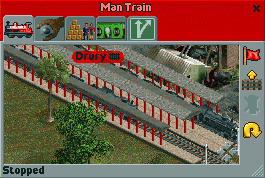 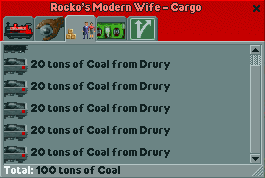 An pragmatic loop is set up so trains can run from the Drury coal mine to the steel mill at Waiuku.  Tram renewed. 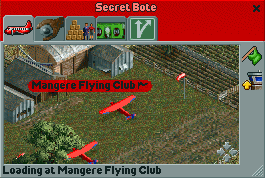 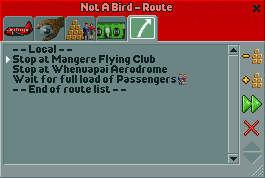 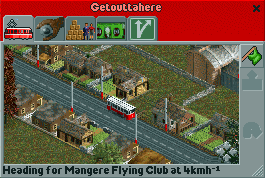 The Maritime Division's Aeronauts are a success and soon some more planes are brought aboard. A tram car helps take excess passengers back to town. 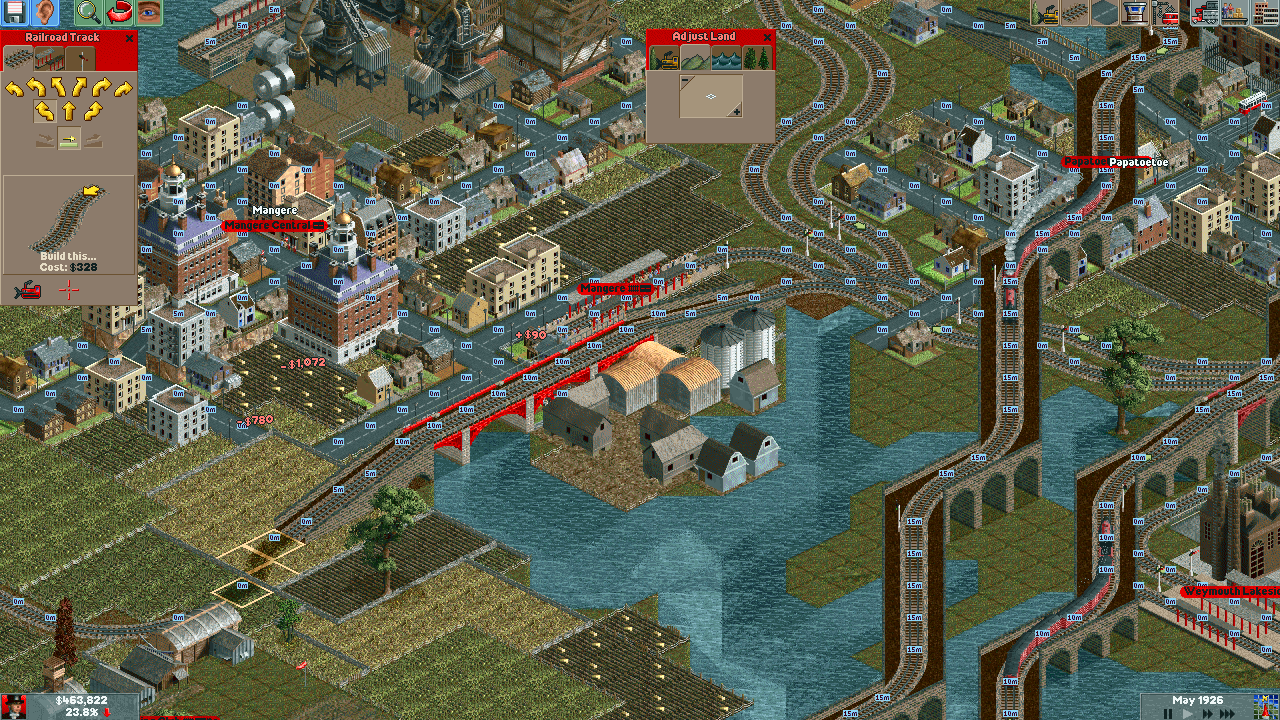 In an effort to connect the Winery near Mangere Airfield a big ugly junction leads to a big ugly bridge. Not as ugly as Evelyn Eggburt's designs, though.  The other end of the branch takes advantage of the big junction where the Hunua line meets to avoid fouling the main line. I forgot to name this train, It's a jinty with three goods/food/grapes cars. 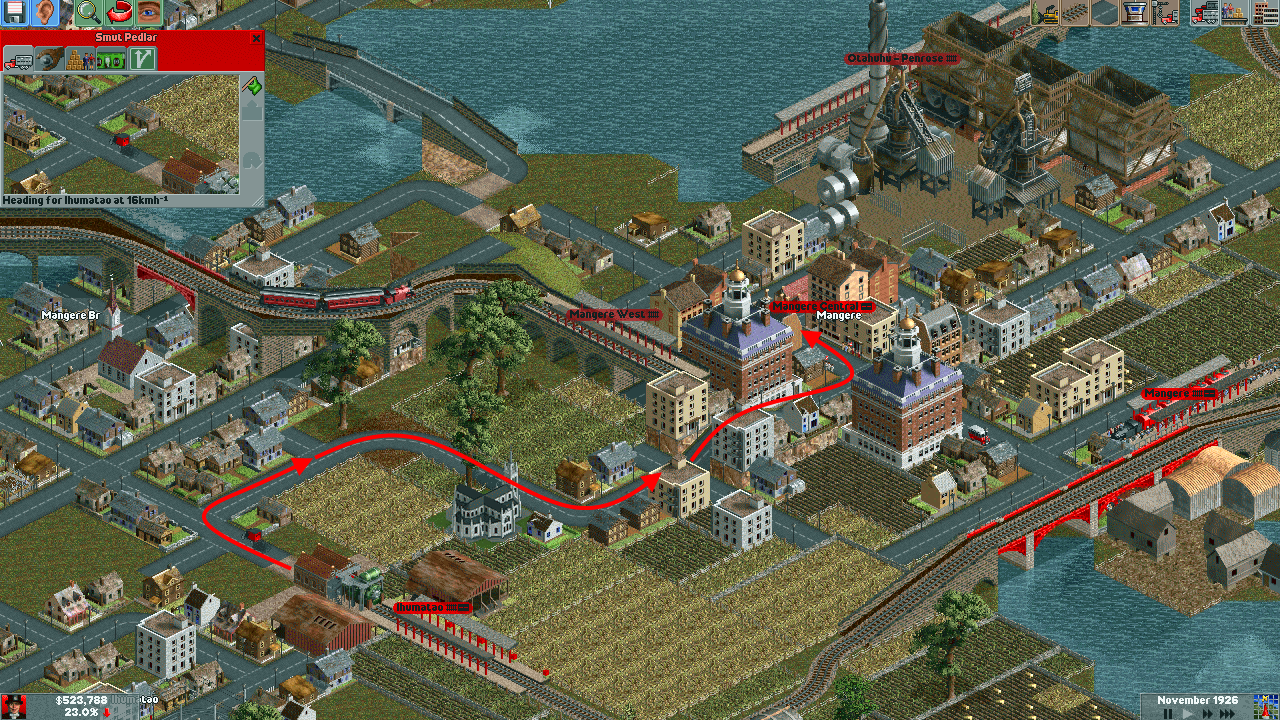 With the wine line quickly working, This truck takes up local food deliveries. 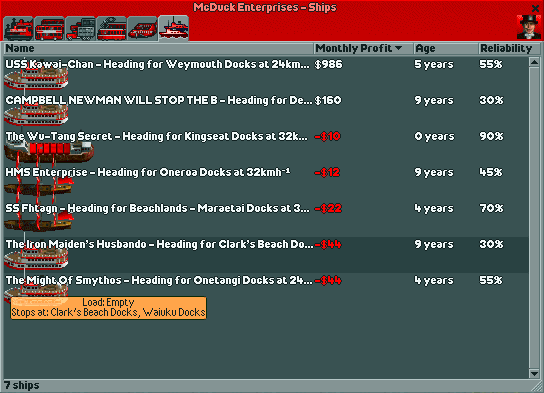 I shall never reveal the activities of SS Wu-Tang Secret! ...Oh. 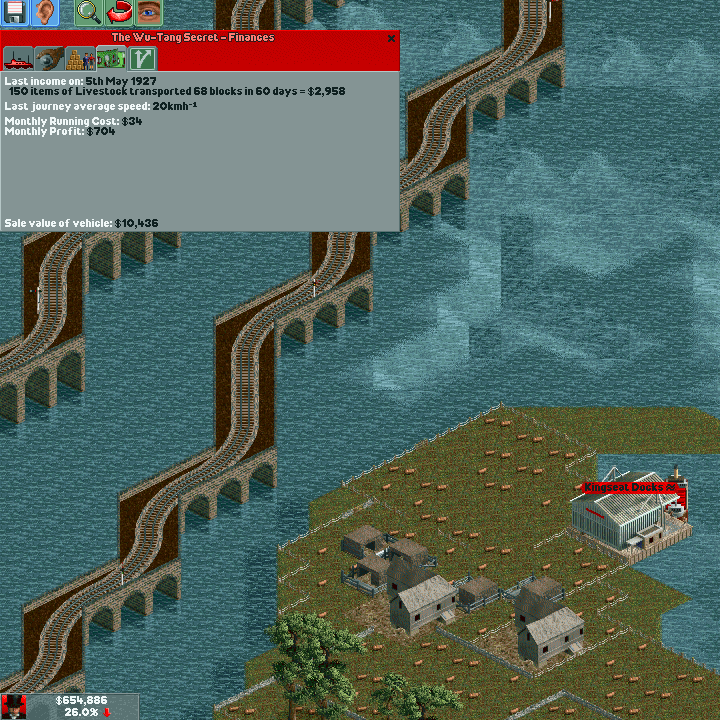 Well, I may as well tell you it hauls livestock to a food processing plant near Papakura. 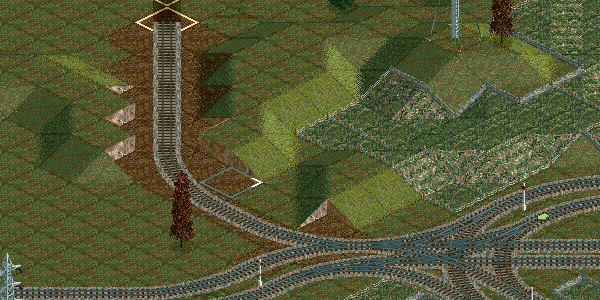 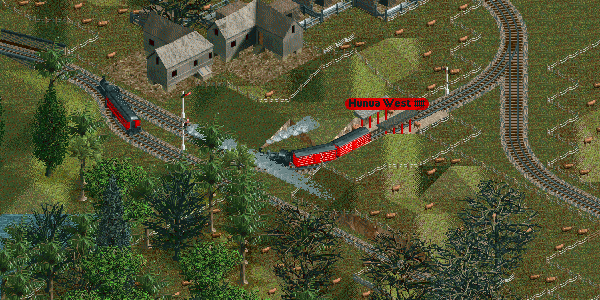 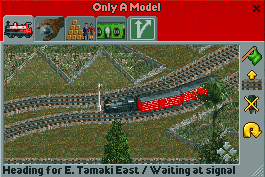 Another Branch makes it's way out to East Tamaki. It recieves livestock from the tiny station near the entrance to the Hunua valley. 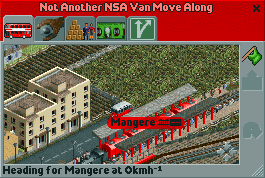 This bus helps clear up passengers mistakenly turning up to the farm at Mangere. 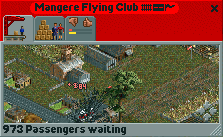 Crowds turn up just to see the Maritime division's Fokker F.VIIs fail to crash! 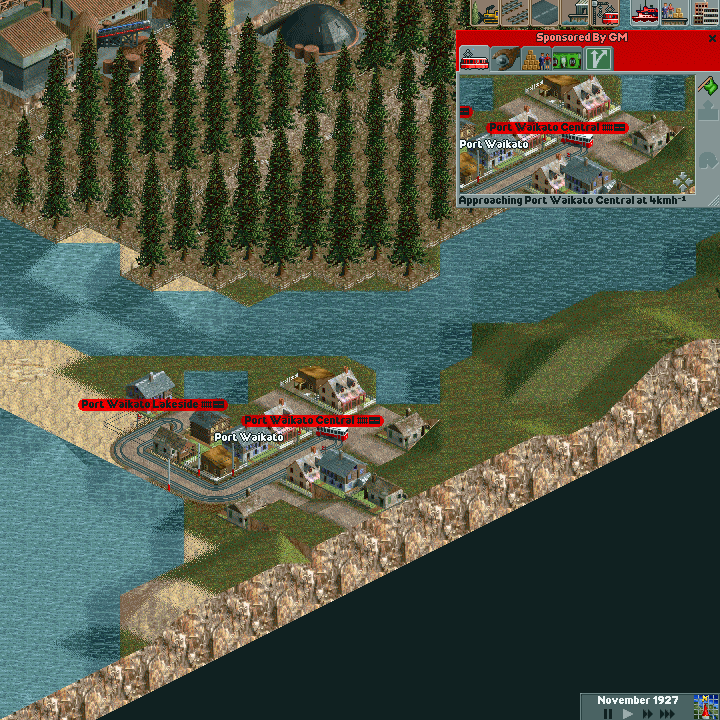 We aren't sure where GM is going, sponsoring this scandalously short streetcar line...  And finally Scrooge gets a couple of loads a week to the DB Brewery near Papatoetoe. 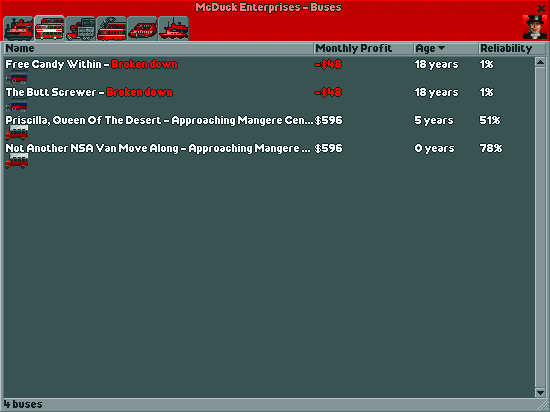 With all this building, our rolling stock is getting old. However, we are making good progress towards our goal of connecting all of South Auckland by 1940. 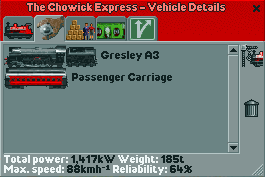 Some of our passenger liners do get an upgrade.  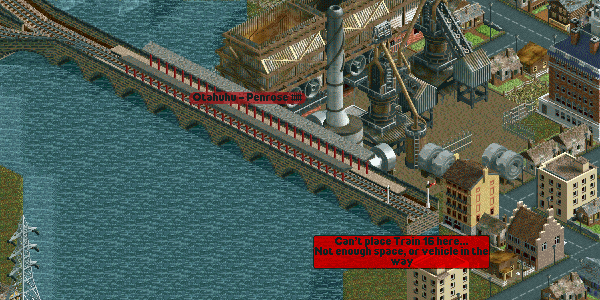 Finally, we must try and get rid of the Burgundy scourge. It doesn't work! All we get is a gentle locomotive kiss! We shall have to axe our rival by (ugh) legitimate means! And now it's time for the News! 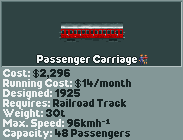 Newer, faster, better. 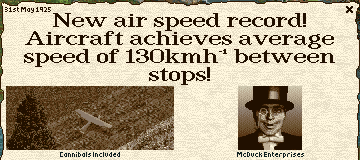 We take back some prestige! 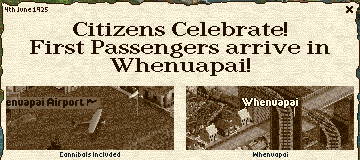   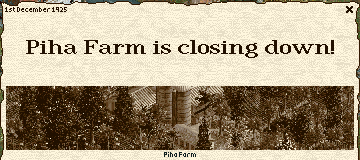 I told them building on a mountainous subtropical rainforest was a bad idea! 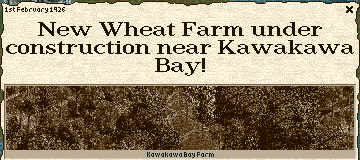  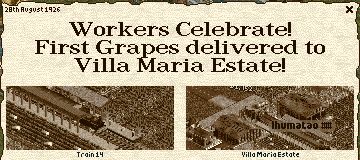  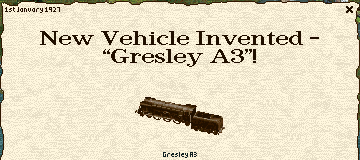 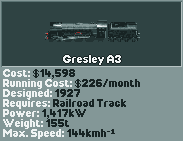 Bigger, more expensive, faster.   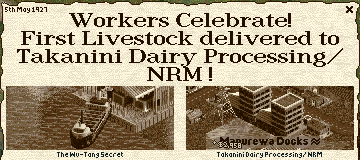    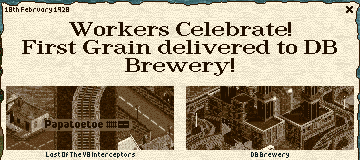 Also alcoholics.       [bay]   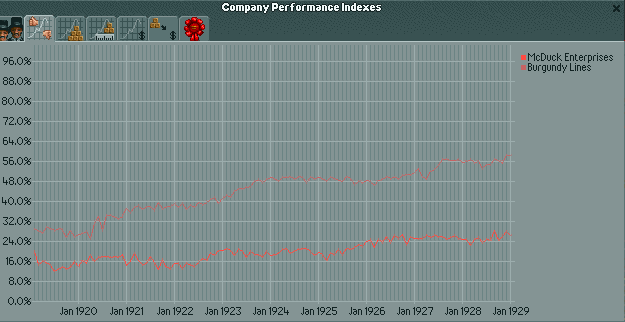  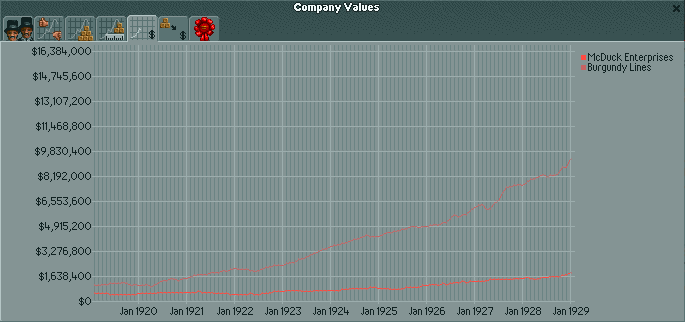 Perhaps concentrating on expansion is hurting our efficiency. 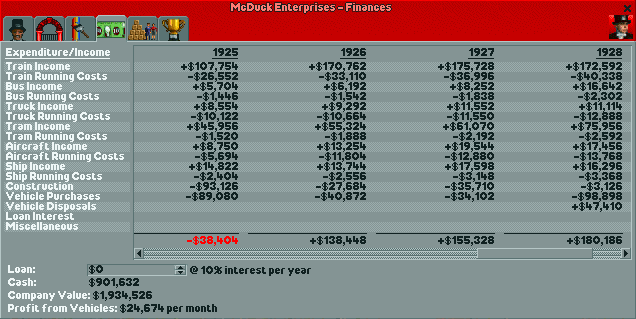 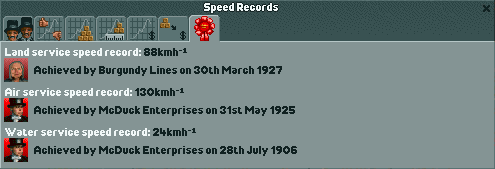 At least we have some of our pride back. Our aging fleet hits us at the moment, but there are rumours of new developments just around the corner... Jaguars! fucked around with this message at 11:39 on Jan 11, 2016 |
|
|
|
Jaguars! posted:P.S. Paul, I love your little summaries, they're very pleasant to read.  . I crib a lot of my information from Peter Herring's Handbook of Classic British Steam Locomotives, if you're curious. . I crib a lot of my information from Peter Herring's Handbook of Classic British Steam Locomotives, if you're curious.Anyway, speaking of which, new Brit loco means new summary: 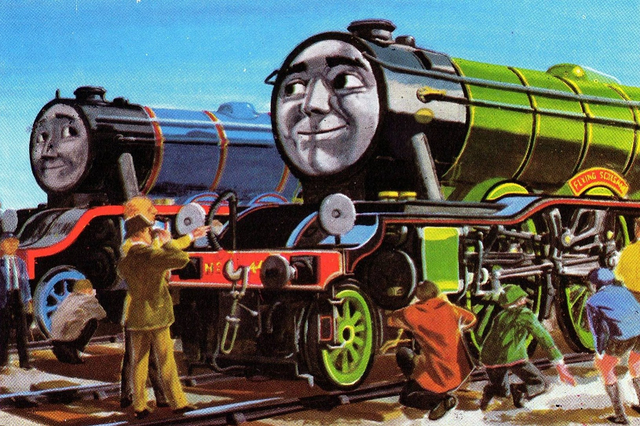 Sources: Wikipedia, Rich@rd, The Rev. W. Awdry, Gunvor and Peter Edwards Gresley A1/A3 Class Company: Great Northern Railway (GNR), and London and North Eastern Railway (LNER) and British Railways (BR) Designer: Nigel Gresley Wheel Arrangement: 4-6-2 First prototypes: 1922 First production models: 1923 Total built: 79 Total preserved: 1 (+ 1 fictional) I mentioned Nigel Gresley's "big engine" policy in contrast to the Midland Railway's "small engine" policy when writing up the Fowler 4F, and the A1/A3 class are a pretty clear example of that in action. The dual name comes from later examples being built with different valve gear and higher pressure boilers, gaining them the name A3: these changes came about because people (correctly) criticised the original A1s for consuming too much coal. Gresley disagreed at first, but was persuaded after a trial swap with a Great Western "Castle" Class showed just how much more coal-efficient the Castle was while performing to the same standards as the A1. The only (real  ) preserved member of the class is arguably the most famous steam locomotive in the world: Flying Scotsman, the first production model from the class and the first steam locomotive to achieve an authenticated 100mph (unauthenticated records having been set by New York Central and Hudson River Railroad's No. 999 and the Great Western's City of Truro). It has gone on many tours and changed hands several times throughout its long and chequered preservation-era career, but is currently owned by the National Railway Museum in York. Funnily enough, it actually returned to steam after a long overhaul only a few days ago, with tests beginning on the East Lancs Railway last Friday. The plan is to have it return to mainline action soon. ) preserved member of the class is arguably the most famous steam locomotive in the world: Flying Scotsman, the first production model from the class and the first steam locomotive to achieve an authenticated 100mph (unauthenticated records having been set by New York Central and Hudson River Railroad's No. 999 and the Great Western's City of Truro). It has gone on many tours and changed hands several times throughout its long and chequered preservation-era career, but is currently owned by the National Railway Museum in York. Funnily enough, it actually returned to steam after a long overhaul only a few days ago, with tests beginning on the East Lancs Railway last Friday. The plan is to have it return to mainline action soon.And of course, there's a famous fictional example of an A3: Gordon, from the Reverend W. Awdry's Railway Series (or, yes, fine, Thomas the Tank Engine). Gordon got to meet up with the last of his brothers during the events of Enterprising Engines. And now I feel even more nerdy...
|
|
|
|
Does Locomotion assume a common rail gauge? Can you run your trains on tram lines? I guess the setting isn't early enough for different rail gauges to really be a problem, especially since you're theoretically the first railway ever in the area.
|
|
|
|
Decoy Badger posted:Does Locomotion assume a common rail gauge? Can you run your trains on tram lines? I guess the setting isn't early enough for different rail gauges to really be a problem, especially since you're theoretically the first railway ever in the area. Short answer to your question(s) is: no. While the game never gets into things like track gauge you cannot run trains on streetcar tracks nor can you run streetcars on regular train tracks. I haven't done a per-pixel comparison but you can see that each length of road and (single) length of track takes up one tile in the game, where as streetcar tracks are always twinned and must fit within the confines of a single tile, so it's probably safe to assume they are narrower. Even if they weren't, they're close enough together that any trains running on them would clip each other if they passed. You can have streetcar and railroad tracks intersect but they cannot junction with each other. They can be placed on roads or bare ground and don't need to follow the same path as any roads they are placed on. Railroad tracks, however, can only intersect with roadways at right angles; ie. you can't place a piece of curved track over a straight road, or vise versa. You also cannot place tracks traveling directly down a road (like this). But you can place elevated roads and tracks anywhere you want, regardless of what's underneath them (including tall buildings). You can even place one route directly on top of another, from one end to the other, and have it just hover in the sky as there will be no room for the game to fit supports in. In fact, you can stack multiple routes on top of each other like this if you wish.
|
|
|
|
There is also narrow gauge in the game, but the selection of vehicles is very anaemic, so I'm not using it in this scenario, despite NZ's gauge being very close to narrow gauge. (1067mm) It can go up hills at 1:1 and I think there's a rack rail option available, but it's still one line to a tile like normal rail.
|
|
|
|
Ahh, 3'6" gauge. How you caused so many problems for us getting our vehicle going. Turns out electric motorised bogies for 3'6" are really hard to get! I can think of a few times when it'd be handy, but a lot of the time you can get around it using a well designed track.
|
|
|
|
Veloxyll posted:Ahh, 3'6" gauge. How you caused so many problems for us getting our vehicle going. You have a rail jigger? Why else would you need something like that? 
|
|
|
|
Jaguars! posted:You have a rail jigger? Why else would you need something like that? Tram :p Technically with a plural. Or with a plural Soon(tm)!
|
|
|
|
1929-1933: March of progress Locomotion Soundtrack - Long Dusty Road Click here to name a vehicle!  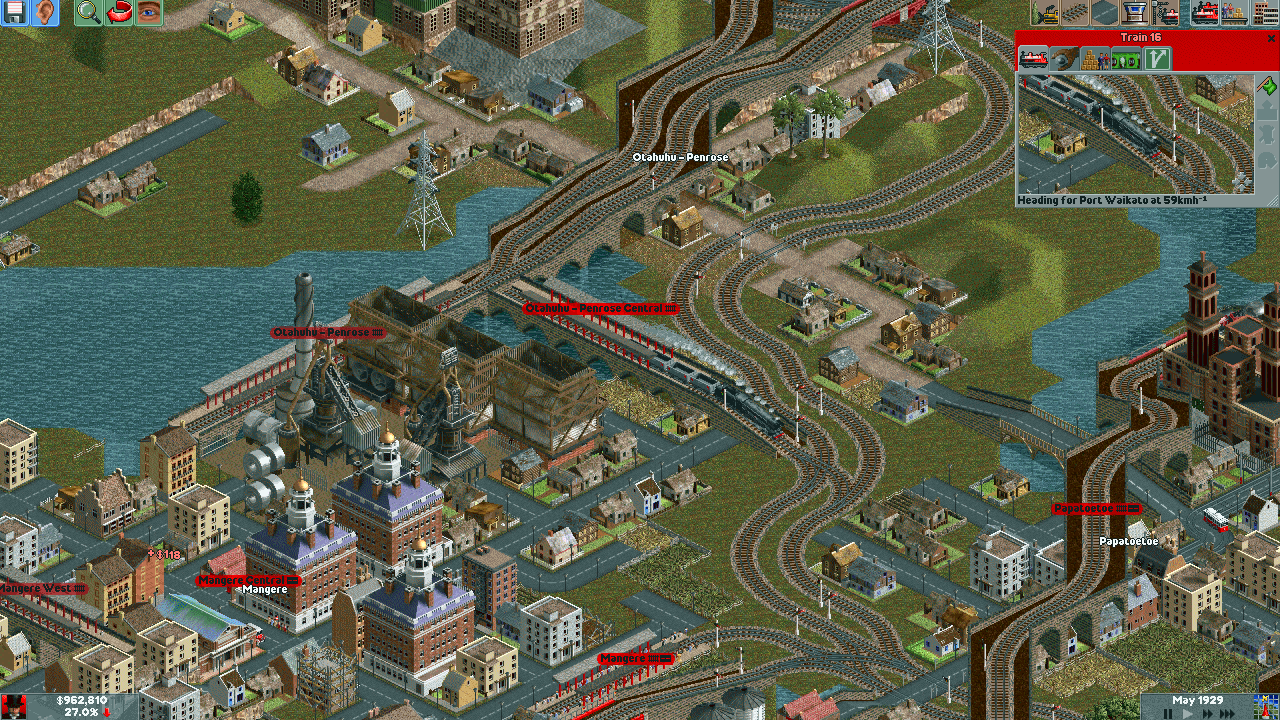 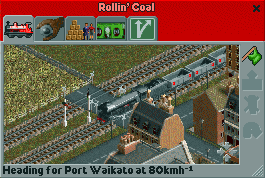 There are two main industries left in our chosen area. The first is this steel mill between Papatoetoe and Mangere. To access it this ugly platform is built. Iron ore is trained here from Port Waikato, requiring no changes at the other end of the railway. 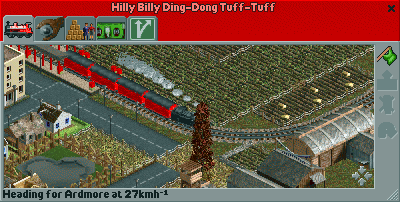 The train between Ardmore and Ihumatao recieves it's proper name.  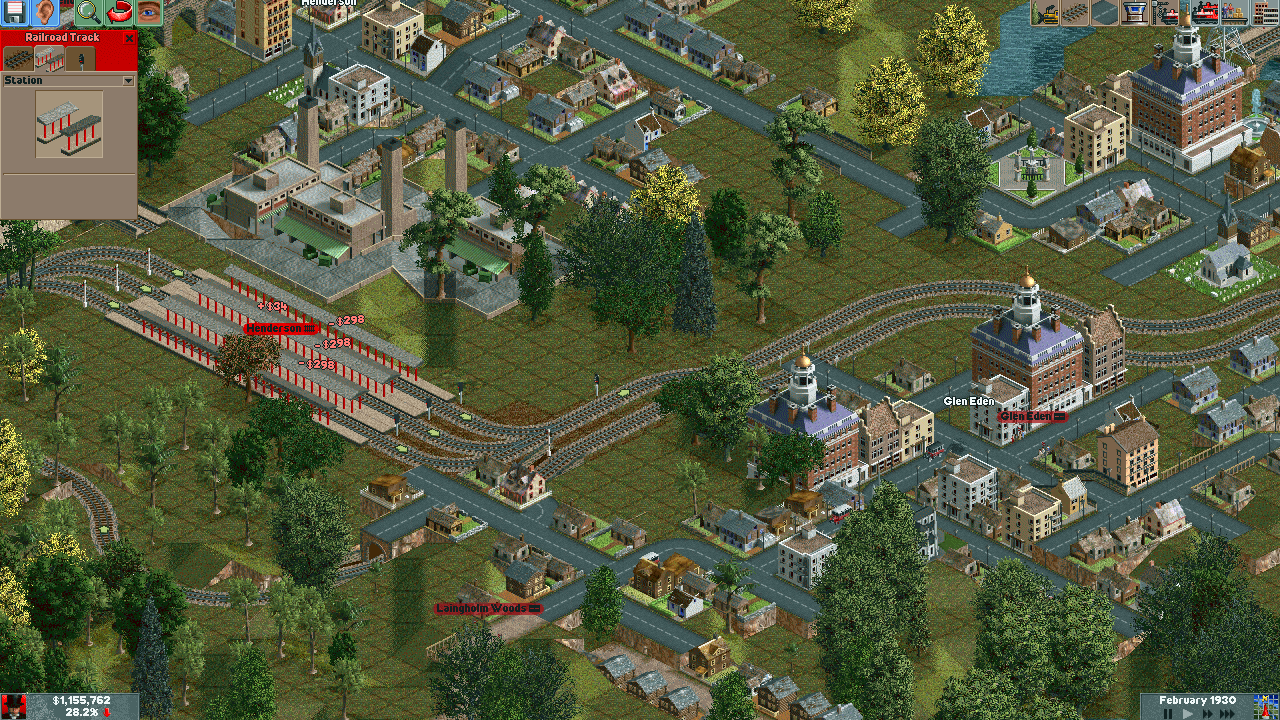 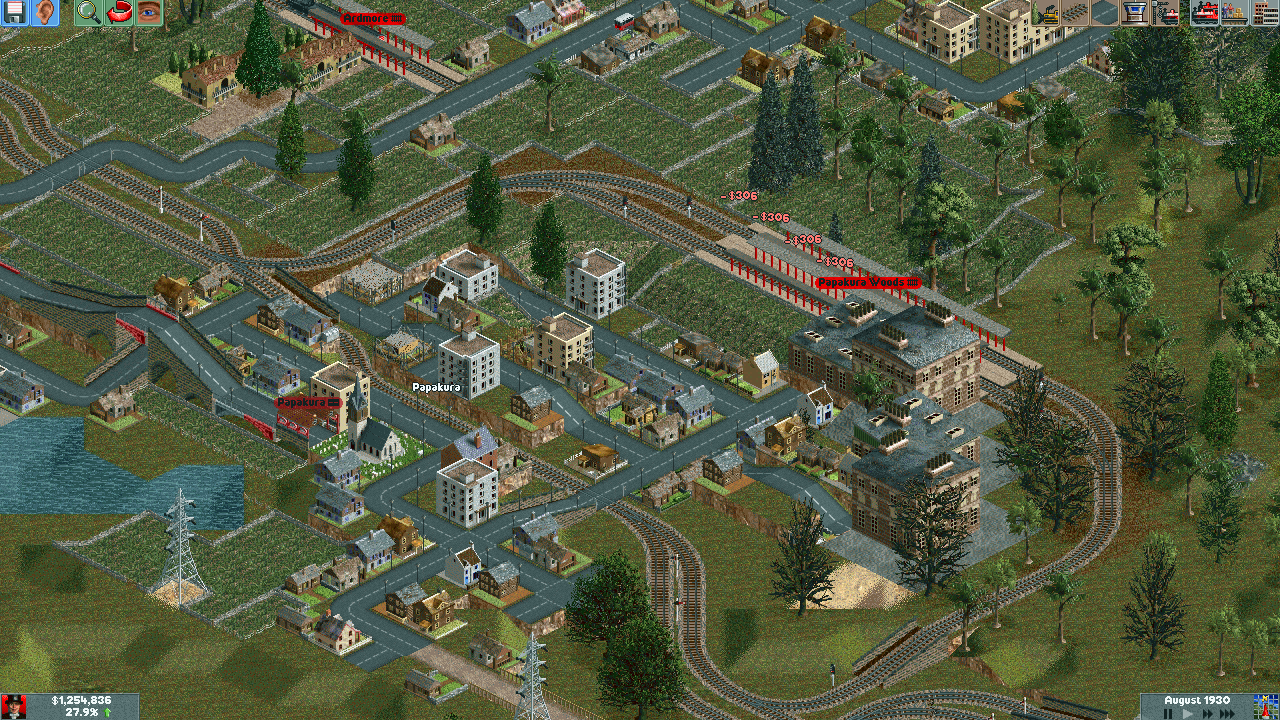 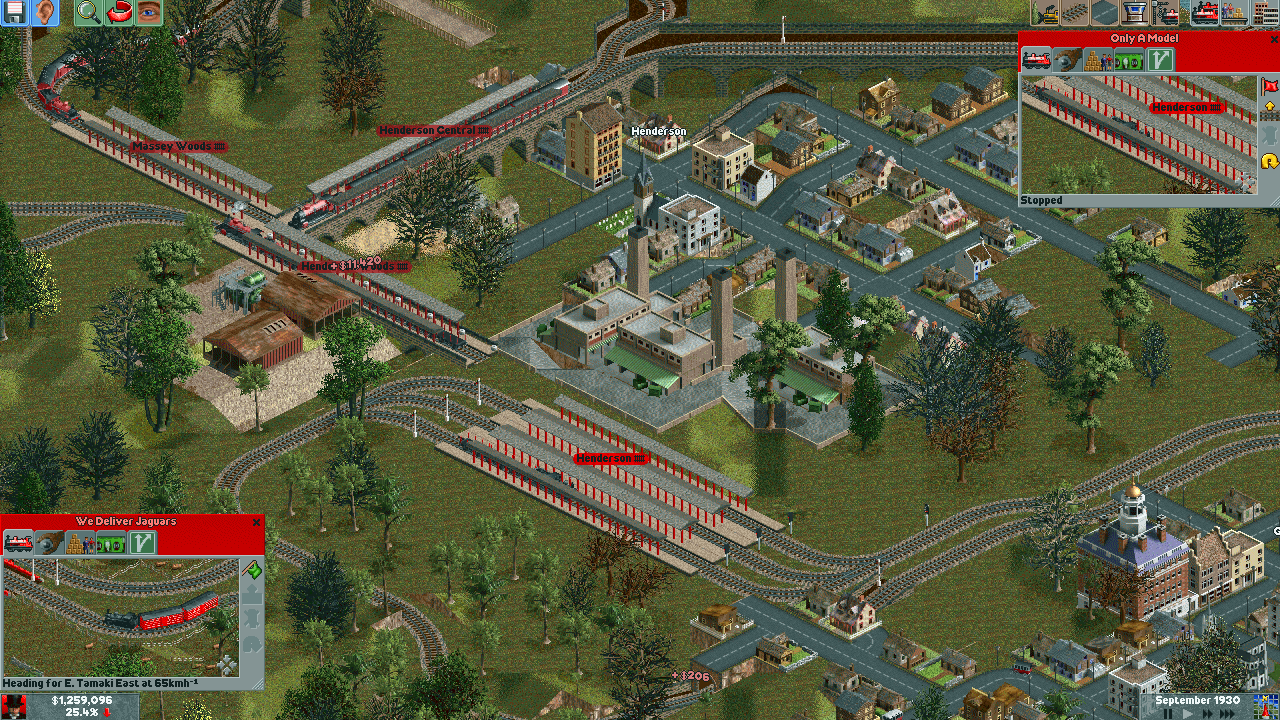 The final industry in South Auckland is the Printing works near Papakura. Our current source of paper is the mill near Henderson, which has been largely neglected, along with the rails north of Auckland. We convert the station into a unidirectional roll /roll out. While we are doing it we also get colourlight signals. They work the same as the semaphore signals. 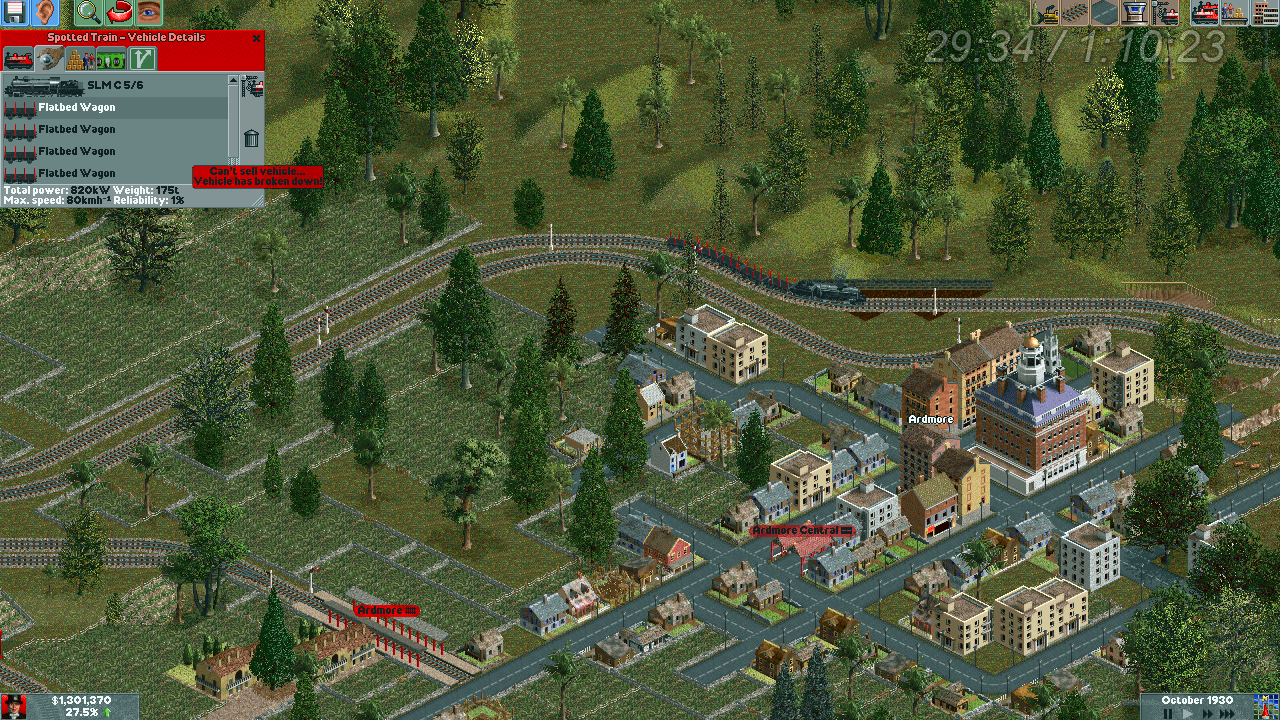 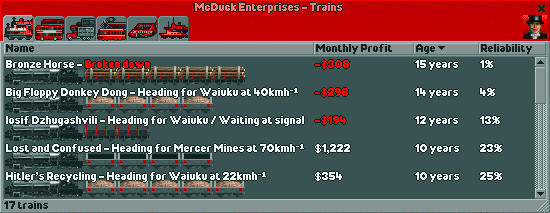 With all our industries connected, we begin to upgrade our trains from the aging SLM 5/6s, most go to the Gresley A3s, except for in a couple of our smallest stations.  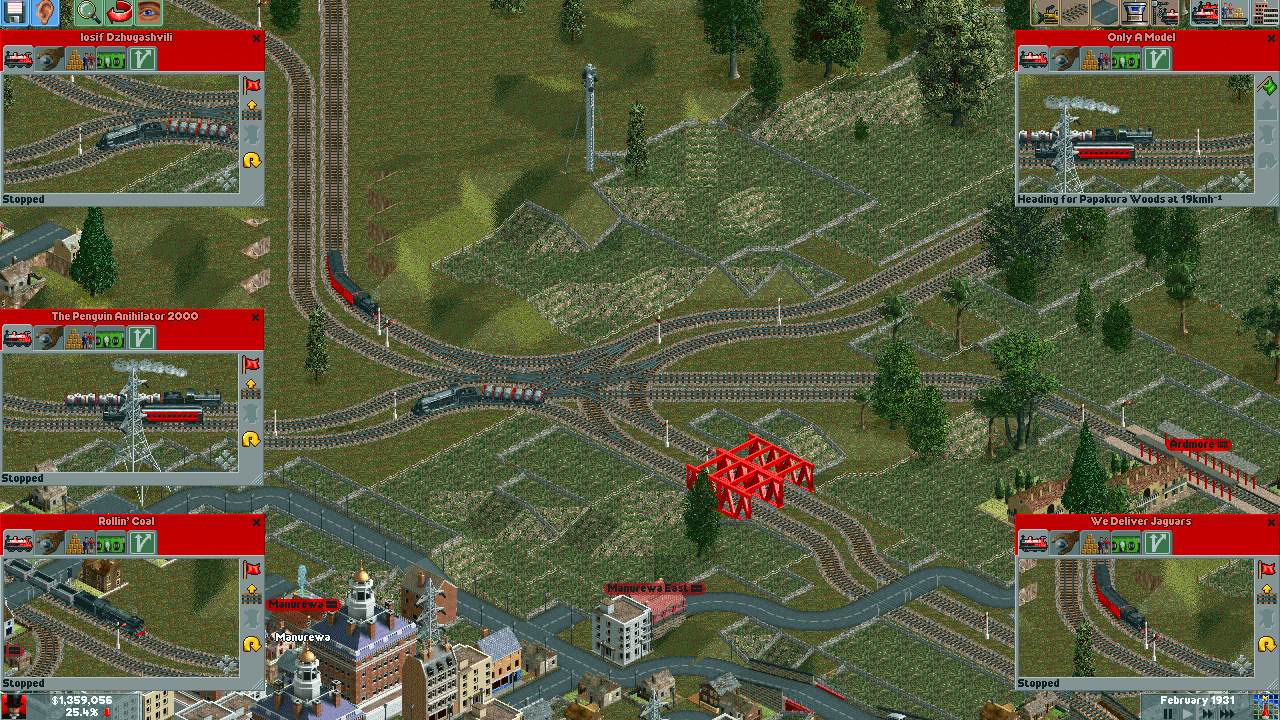 And of course there are always the inevitable traffic jams to deal with. Replacing the old locomotives helps lessen the amount of trains breaking down in the middle of junctions and therefore reduces congestion. 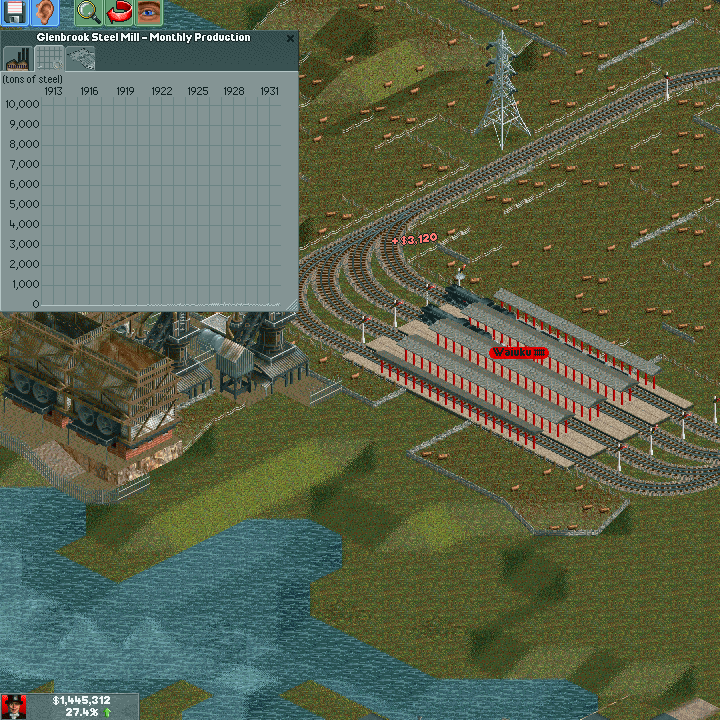 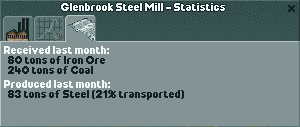 Steel mill production at Glenbrook is slowly rising as more services are added and the trains are modernised. 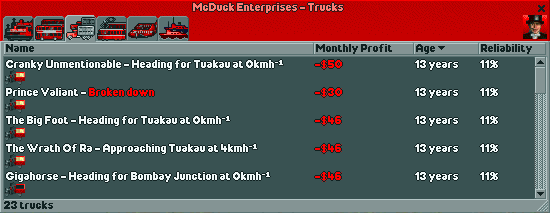  Another important leap forward is the arrival of new trucks in 1935. They are more powerful and take 6t of grain each instead of four. Replacement is quick and easy as we just stop them as they leave the unloading dock.  We should see this graph rise as the new trucks do their thing. 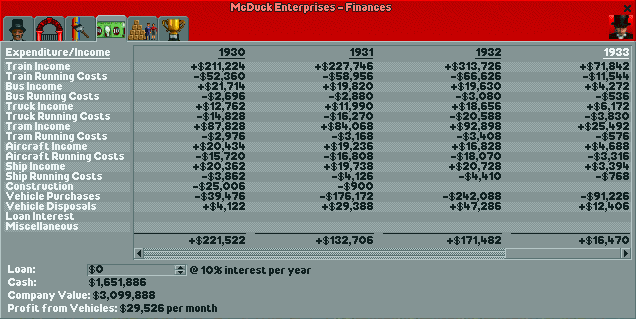 You can see here that the new trucks have an effect, as Truck income in 1933 exceeds expense for the first time.  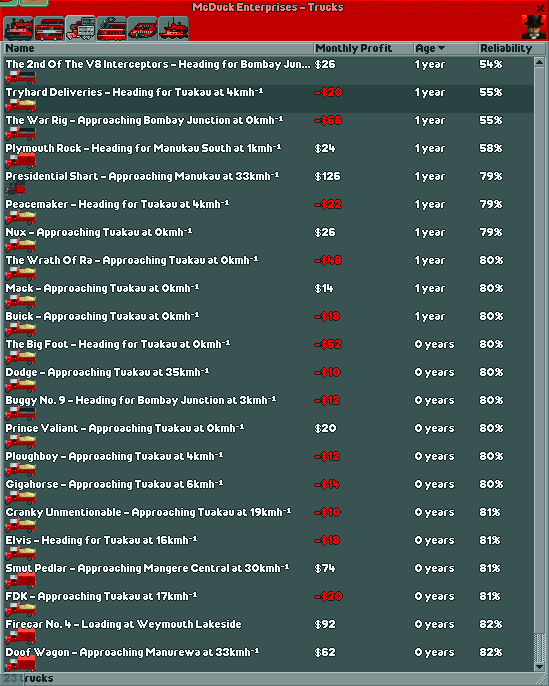 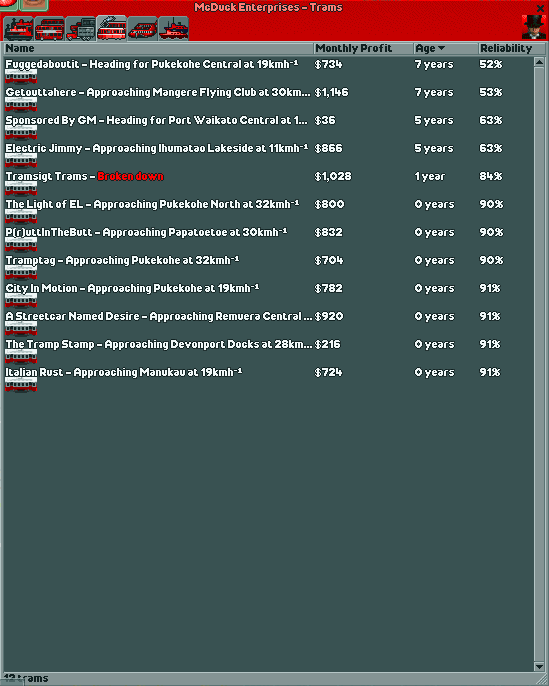 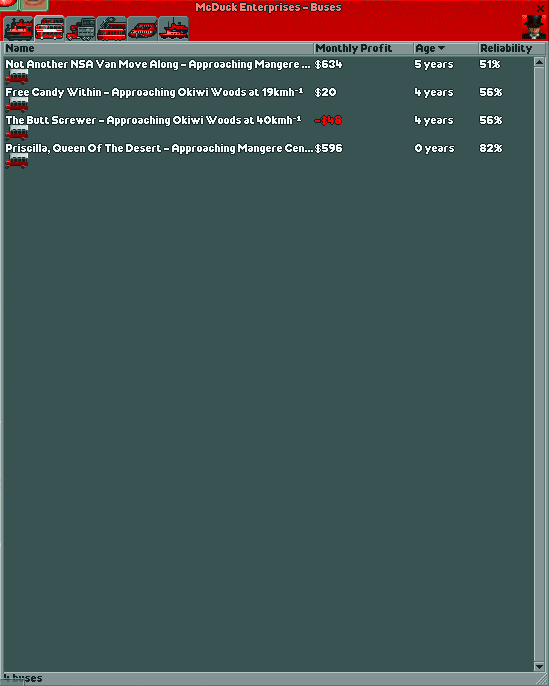  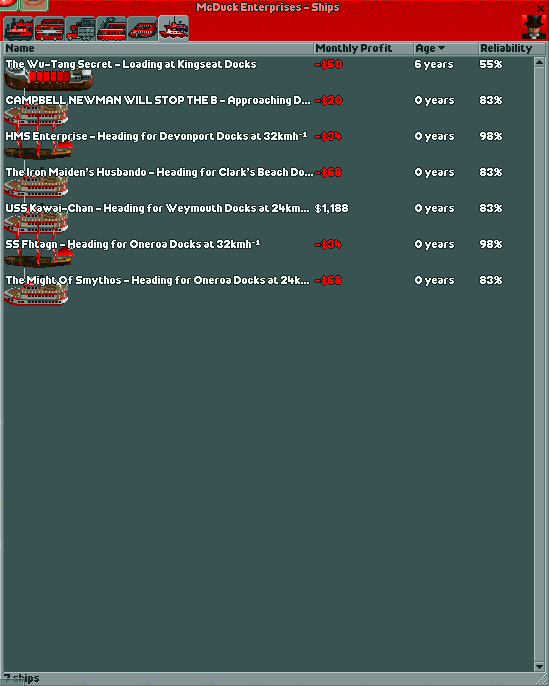 The modernised fleet. We also get some Tante Jus (Ju-52 Passenger planes) to replace our Fokker Mk 7s, which have done good service, but obsoleted rapidly. And now it's time for the News!   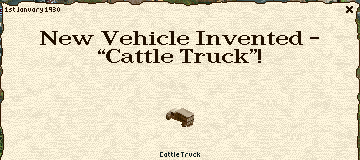 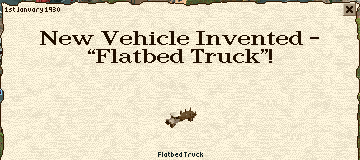 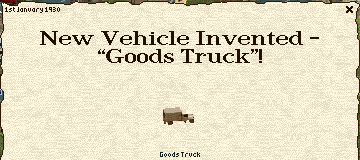 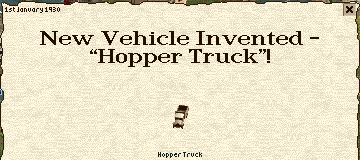 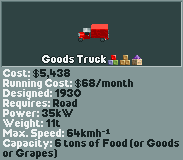 Stats are similar for other load types. Note the lack of a mail truck! Mail never seems to catch a break for some reason. 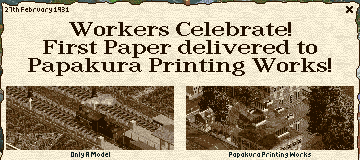 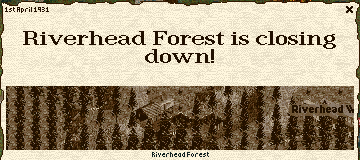 By this stage of the game, Industries without transport links start to close down.   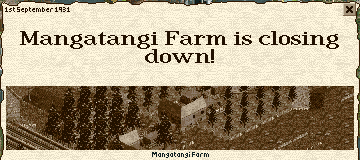 The depression continues to blow down amongst the countryside.   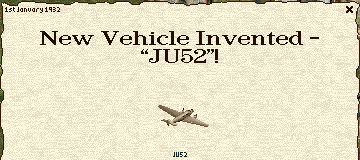  The Ju-52 becomes the mainstay of the Maritime division's air fleet. 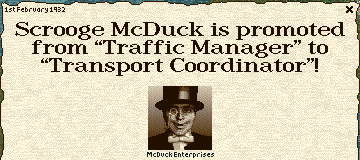  Unfortunately, Burgundy is the first to actually get the Ju-52 in service. 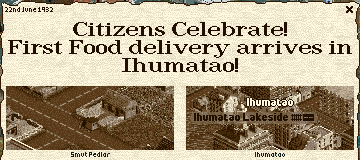    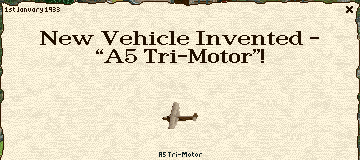 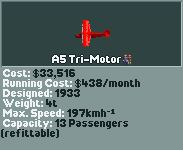 Worse in every respect to the Ju-52, it was perhaps a mistake to include the Trimotor. It is the default game's Ju-52 counterpart in the American set. 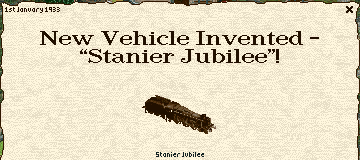 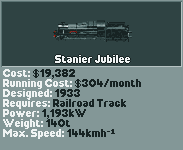 This new engine is slightly less powerful but lighter than the A3. It's about 5% cheaper to run, as well.  
Jaguars! fucked around with this message at 09:53 on Feb 3, 2016 |
|
|
|
What sort of timeline is there on turning the islands into concrete hellscapes? Is it mostly just waiting for the towns there to build up through passenger traffic?
|
|
|
quote:how long would those bridges be in real life
|
|
|
|
|
Bought the game because of the LP but I haven't been able to complete any of the 100-year challenges because instead of 1 competing company making hideous double-tracked spaghetti bridges there are 14 and by 1905 the landscape is a frustrating dystopian train hell. By 1920 you can't see the ground.
|
|
|
|
tomanton posted:by 1905 the landscape is a frustrating dystopian train hell. By 1920 you can't see the ground. I want to see some screenshots of this.
|
|
|
|
Decoy Badger posted:What sort of timeline is there on turning the islands into concrete hellscapes? Is it mostly just waiting for the towns there to build up through passenger traffic? President Ark posted:how long would those bridges be in real life tomanton posted:Bought the game because of the LP but I haven't been able to complete any of the 100-year challenges because instead of 1 competing company making hideous double-tracked spaghetti bridges there are 14 and by 1905 the landscape is a frustrating dystopian train hell. By 1920 you can't see the ground. PurpleXVI posted:I want to see some screenshots of this. Someone posted this earlier:  It really does start to fill up the whole map with brown curved rail.
|
|
|
|
I haven't played Locomotion for years, pretty much not since it came out. But I remember some of the earliest mods made for it included some that changed construction costs, making bridges and raised rail something you really had to consider hard. I don't remember if those affected the AI at all.
|
|
|
|
|
That would be really interesting. I'd love the challenge of playing a game where you have to take a more considered approach to expanding your empire. I've never seen those mods.
|
|
|
|
PurpleXVI posted:I want to see some screenshots of this.  Jaguars said Great Britain is especially bad, but words don't do justice. Sheffield is in here somewhere.  The Bristol Channel is also no more, having been completely paved over to accommodate freight highways and rollercoasters. By sheer coincidence, a familiar face is helping turn England into a dystopian train hell.  
|
|
|
|
You're not kidding about rollercoasters.
|
|
|
|
Pretty certain that could be fixed by making bridges cost more.
|
|
|
|
But would the AI even know about bridges being much more expensive? It could be that it would just continue trying that same strategy, and then have one of two things happen. Either the AI cheats and continues to pay the original, unmodified price, or the AI does pay full price but then just takes out giant loans or cheats and keeps building while in negative cash. The bridges cost mod might be one that was made before one guy at the TT-Forums decided that engine hacks are not permitted. Someone decided to read the game's EULA and spotted a sentence reading "reverse-engineering is not permitted", and decided that engine hacks (like TTDPatch) are out. Thing is, that kind of clause in an EULA might not actually be enforceable, and at least some countries have laws overriding it. And reverse-engineering is only needed to develop a patch, actually using a patch can be done entirely in-memory, leaving the original game binary unmodified. All in all stupid.
|
|
|
|
|
Not sure that'd solve the AI being so okay with building more bridges.
|
|
|
|
Since Locomotion came out right around the time Hasbro resurrected the Atari brand I'm assuming one of them still holds the rights? Unless someone copied the bulk of the game and started selling it as their own I can't imagine anyone there really giving a poo poo or wanting to take the time/money to chase down fan made patches to a game that's been ignored for close to 12 years. Still, the pictures below exemplify exactly why I play with no competitors in this game - there's no real way to fix that's going on and it will steadily get worse as the AI looks for even more ways to make money and they slowly strangle the map and town growth like that. What isn't covered in rails and mile high freeways will slowly fill with buildings. In Transport Tycoon and Transport Tycoon Deluxe the AI companies ignored local council opinions and could terraform for free (which lead to all sorts of hilarity on the South American and Alpine maps) but here, I don't know what rules they follow; it's been so long since I cared to play with them to observe what happens.
|
|
|
|
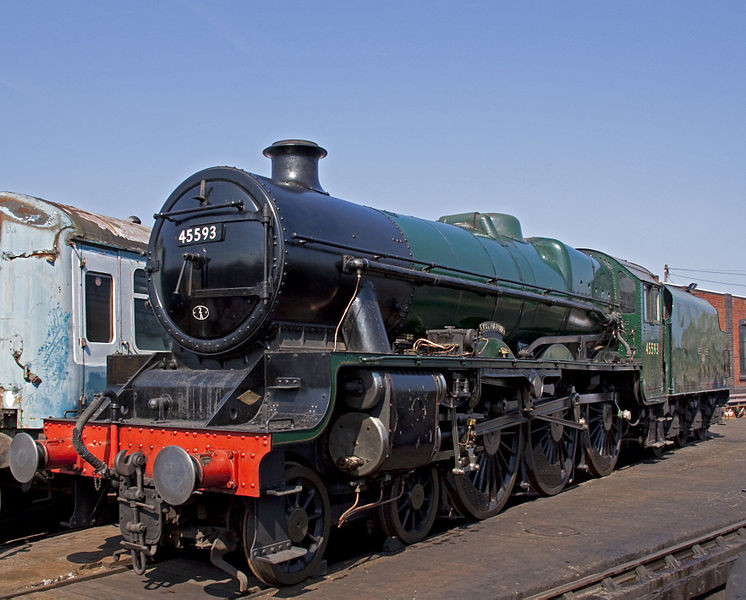 Sources: Wikipedia, Tony Hisgett Stanier Jubilee 5XP/6P Company: London, Midland and Scottish Railway (LMS), and later British Railways (BR) Designer: William Stanier Wheel Arrangement: 4-6-0 First produced: 1934 Total built: 191 Total preserved: 4 Until 1932, the LMS had been struggling to compete with their rival for services to Northern England and Scotland, Nigel Gresley's LNER. Henry Fowler had tried his best with locomotives such as the Royal Scot, but he was ultimately frustrated by the aforementioned "small engine policy". In 1932 though, everything changed: the LMS appointed William Stanier as their new Chief Mechanical Engineer, headhunting him from his role as Swindon Works Manager on the Great Western Railway. Stanier's job was nothing less than the complete restocking of the LMS's mainline fleet (the Fowler 4Fs and Jinties had the branch lines covered, at least), and the results can only be called a spectacular success. Not only did Stanier give the LMS a fleet to rival the LNER, he realised that, while speed and power were all very well, the coming decades would be just as much about reliability, adaptability, cost-effectiveness and ease of maintenance. The Jubilee class's role was secondary express passenger work on fast inter-city trips. Their initial designation was 5XP (power class 5 express passenger), after the Patriot class that they were based on, but this was eventually changed to 6P. As the Patriot was a proven design, and as there was a big need for the new engines, they were ordered without any prototyping. This turned out to be an error: generally sound Great Western design principles clashing with already-existing LMS concepts and the Jubilee's unusual (well, unless your name was Nigel Gresley) 3-cylinder layout led to teething troubles with the new engines, and over a hundred were built before they were fixed. After this was sorted, though, the Jubilees came in to their own. The name, incidentally, comes from the fact that the Jubilees were the class chosen to celebrate King George V's silver jubilee, with the engines named after places in the British Empire, war heroes and famous ships. The Jubilees are in some ways the underdogs of the Stanier locomotives. They weren't quite the box-office material of the Princess Royals and Princess Coronations, but nor did they have the sheer numbers (over 800 each) or railway enthusiast love of their close cousins, Stanier's "Black Five" mixed traffic engines* and his 8F heavy freight locomotives, although they did make it as far as 1967 before the last members of the class were withdrawn. But, like the Fowler Jinty, the Jubilee has another claim to fame as one of the locos featured in Transport Tycoon: and unlike the Jinty, it even made it to Transport Tycoon Deluxe as one of the three starting engines. So that faint bell ringing in the back of your head? It was probably that. * I know these are in Locomotion and I really hope Jaguars! added them to his scenario.
|
|
|
|
The competitors don't do anything fancy, that's the problem. They just pick two industries/cities A and B and calculate the shortest path between them. Adding costs would just halt the AI, which is why they ignore them altogether. In the original Transport Tycoon, memory was limited so the AI couldn't calculate and store the whole path in advance, so instead it just keeps trying to bring the two track points closer and closer until they connect. This led to the infamous zig-zags as they couldn't keep track of what was already done, and would make it extremely vulnerable to any changes. In Locomotion, this was "solved" by just calculating and buying the whole path before building. This is why most routes are curvy bridges, because a straight line between two points usually comes down to a long tall bridge to avoid most obstacles (good thing nobody taught them about underground building). Human players don't do this, they build large resuable connected networks, and try to find the most optimal cost-effective least-disruptive route. That would require a much more advanced algorithm than just straight pathfinding (if that's a problem you fancy, OpenTTD lets you write your own AIs). SupSuper fucked around with this message at 22:26 on Jan 25, 2016 |
|
|
|
How long can an industry stick around with no transport to service it, and what determines how often new ones pop up?
|
|
|
tomanton posted:Sure. I want to read dystopian fiction written about life in the grim future of the United Railway Kingdom.
|
|
|
|
|
President Ark posted:I want to read dystopian fiction written about life in the grim future of the United Railway Kingdom. It's like living in Midgar, only instead of a city of rich people and corrupt businessmen above it's just endless tracks leading in every direction. The constant rumble of trains slowly driving people crazy through lack of sleep.
|
|
|
|
I want to know how many suffixes there were before London went to numbering stations. One of the interviews I found with Chris Sawyer mentioned that one of the hardest parts of programming Locomotion was getting the computer to understand the layers and order that things had to be drawn in order to get one tile drawing correctly. The fact that it renders everything correctly is pretty spectacular. Glazius posted:How long can an industry stick around with no transport to service it, and what determines how often new ones pop up? Sometimes they stick around forever, but generally they disappear about 20 - 50 years after game start. New ones pop up maybe half the time. SupSuper posted:The competitors don't do anything fancy, that's the problem. They just pick two industries/cities A and B and calculate the shortest path between them. Adding costs would just halt the AI, which is why they ignore them altogether. That's interesting. I would have thought that the AI would do a cost estimate before putting it in so that intelligent AIs could avoid building lines that bankrupt themselves. Paul.Power posted:
|
|
|
|
Jaguars! posted:Thanks as always Paul, it's interesting to see why the Brits build so many different locomotives as many of them around this time have almost identical in-game stats. I can't remember now if the black 5 was included, I know the A4 missed out because the stats were identical to the A3 and that style of streamlining was never used in NZ. Sometimes it's just about prestige: in some ways, the Great Western King class were a publicity stunt, because for all their power there wasn't much they could do that a Castle class couldn't, and their power came at a heavy cost in terms of weight and axle-loading. Meanwhile, their unsung Hall class would leave the biggest legacy of all by being the first true mixed-traffic locomotive, that would inspire William Stanier to make the Black Five when he transferred from the GWR to the LMS. Mixed-traffic designs continued to catch on, until by the time BR's Standard Classes came along, all but three of the designs were built for mixed traffic (and even then, one of those three is a weird outlier - with a curious connection to Transport Tycoon...). The fourth of the Collett 4-6-0s, the Manor, was another mixed-traffic loco specifically designed with low axle-loading in mind, to run on secondary routes. Shame to miss out on the A4, although I've always kind of preferred the LMS's stuff (although the V2 is an interesting Gresley engine) and I can definitely understand the point about streamlining. I'll just have to keep my fingers crossed for the Black Five, although it won't be the end of the world if it's not there  . .
|
|
|
|
Jaguars! posted:I want to know how many suffixes there were before London went to numbering stations. Five of the seven biggest cities on the map are in Ireland, which now looks like it was desperately trying to escape Great Britain before being lashed down to the empire by ~40 rail bridges. Decoy Badger posted:What sort of timeline is there on turning the islands into concrete hellscapes? Is it mostly just waiting for the towns there to build up through passenger traffic?
|
|
|
|
[E] Oops, I was previewing some of the next update to see if it uploaded properly, and hit the wrong button.
Jaguars! fucked around with this message at 10:14 on Feb 2, 2016 |
|
|
|
1933-1940: Steam Based Bovine Perambulation Locomotion Soundtrack - Setting Off The jazz is slowly getting smoother and more urbane. Click here to name a vehicle!  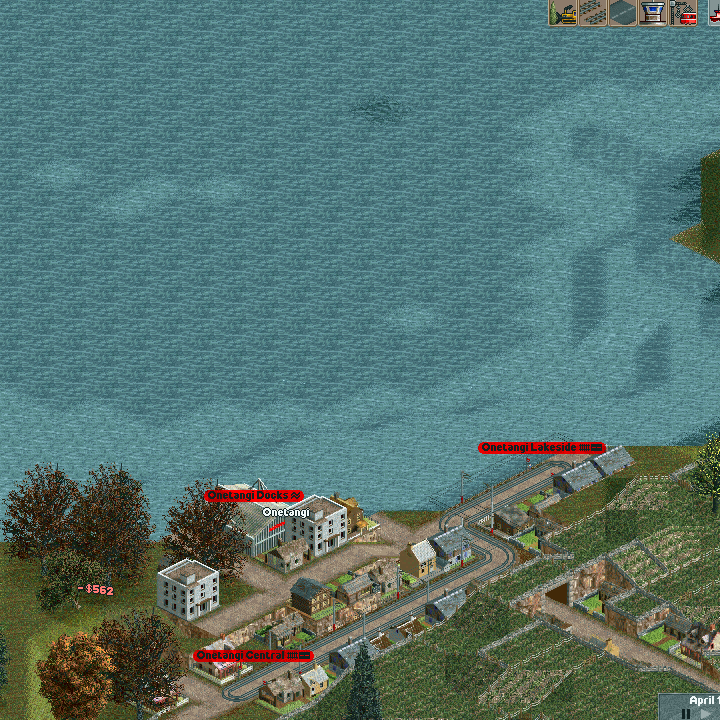 We start out with some ideas to make the islands   Someone was in a very descriptive mood when they made up these names 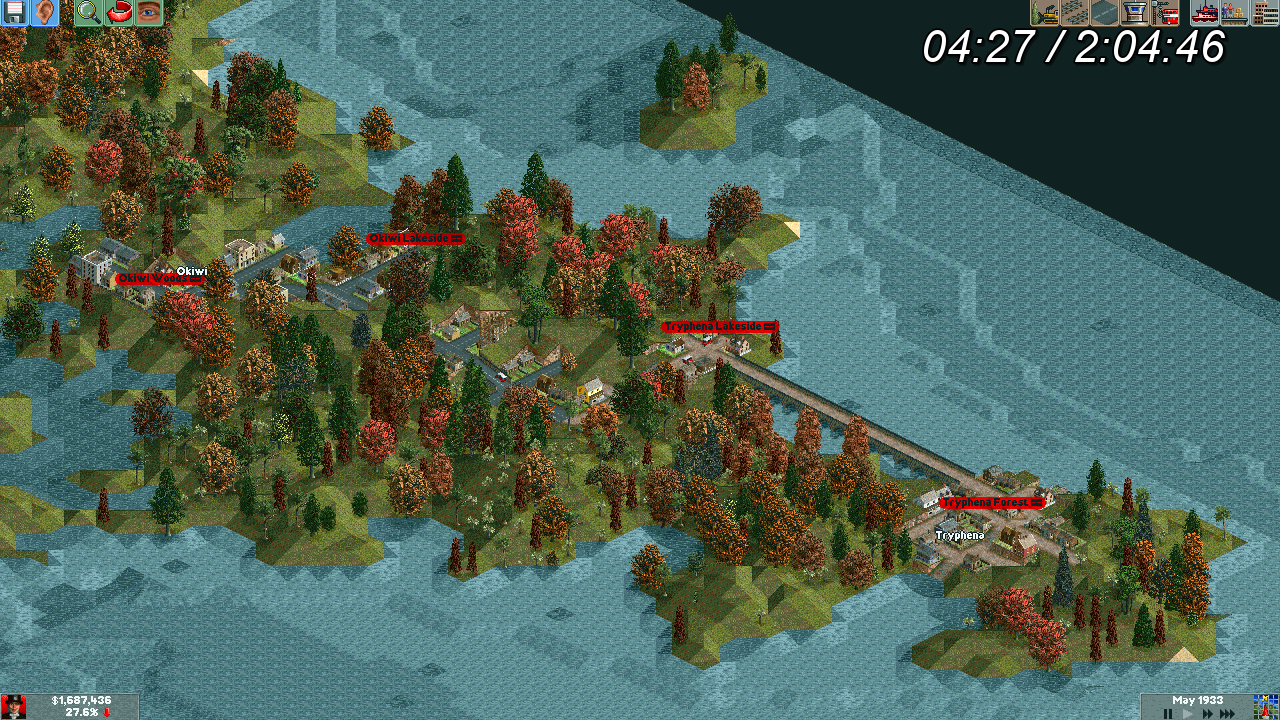   And someone was very blunt when it came to buses   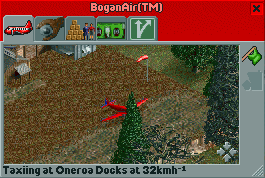 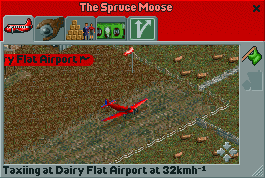 A new air route inaugurates between Waiheke Island and the Northern town of Dairy Flat. The Airport at Oneroa connects with the ferry services. 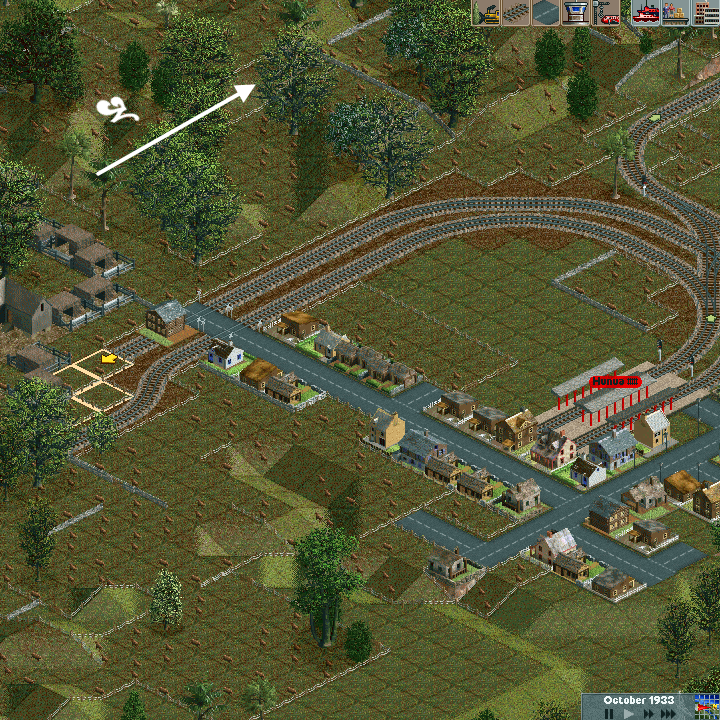 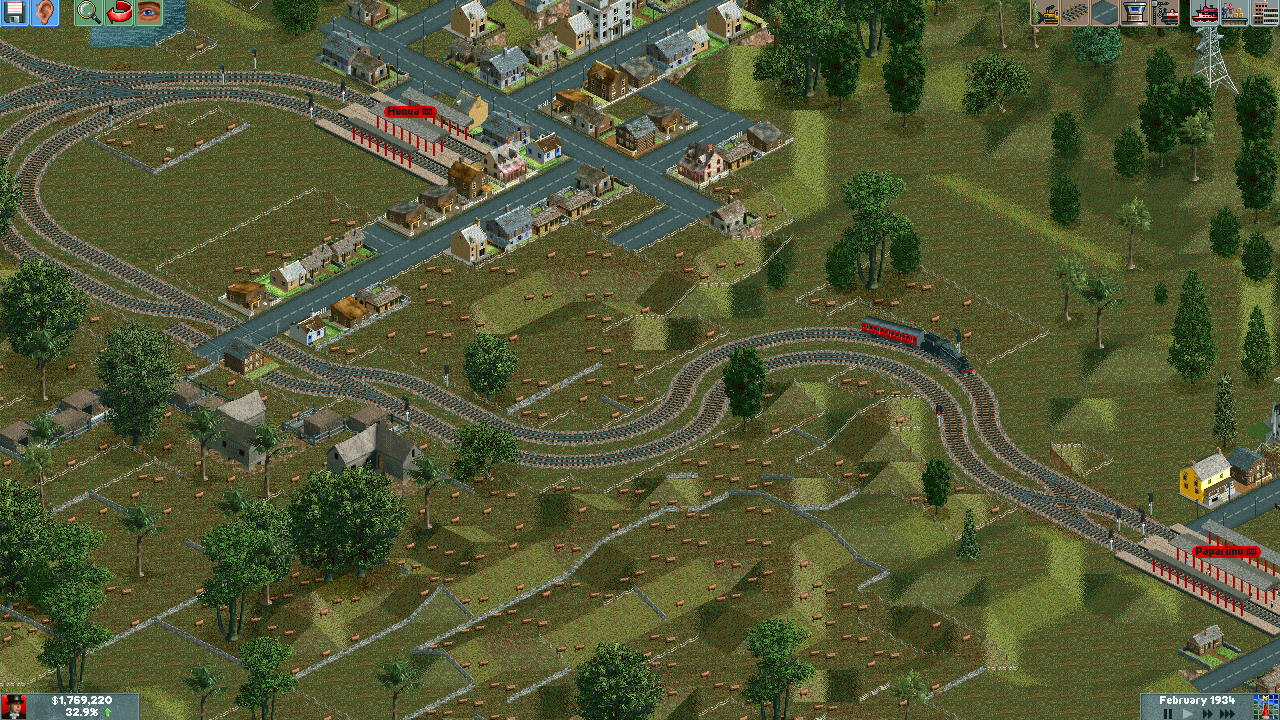 At Hunua, our smallest starting town, a short line to Paparimu is created. It's futureproofed, aside from certain holdouts... 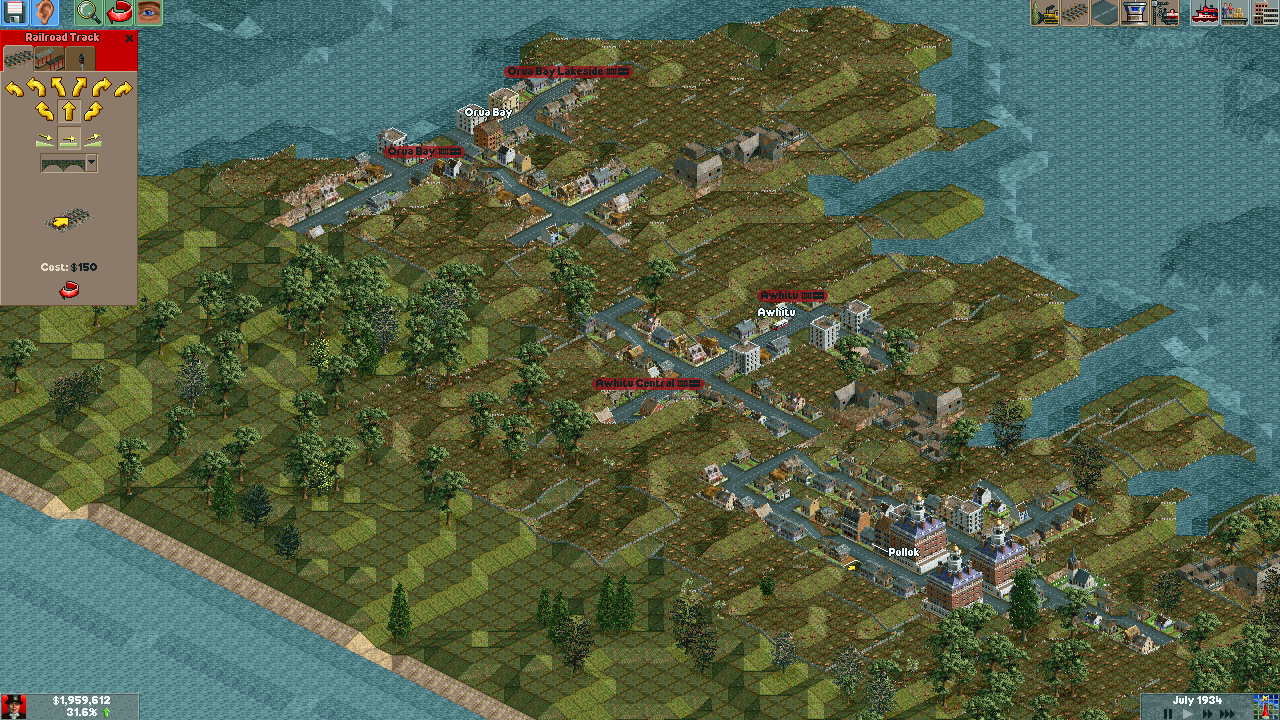 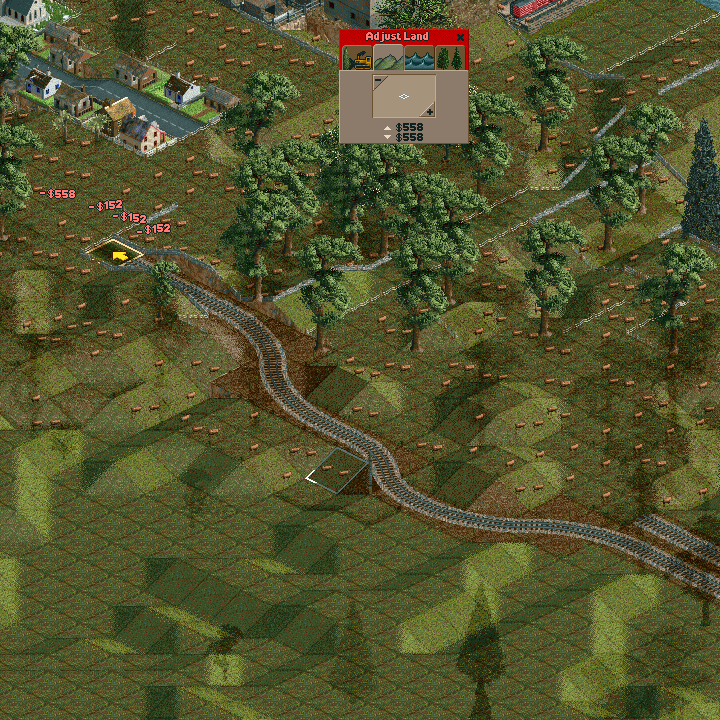 The Awhitu peninsula forms the southern entrance to the Maukau harbour (The peninsula that forms the bottom part of the map, for those who haven't been doing their New Zealand geography homework). As of 1940, it contains 3,456 people, compared to 2502 in the real 2013 census. It hasn't much been affected by the transit sprawl, it contains several farms all producing livestock and has linear open space, making it an ideal candidate for our next railroad. 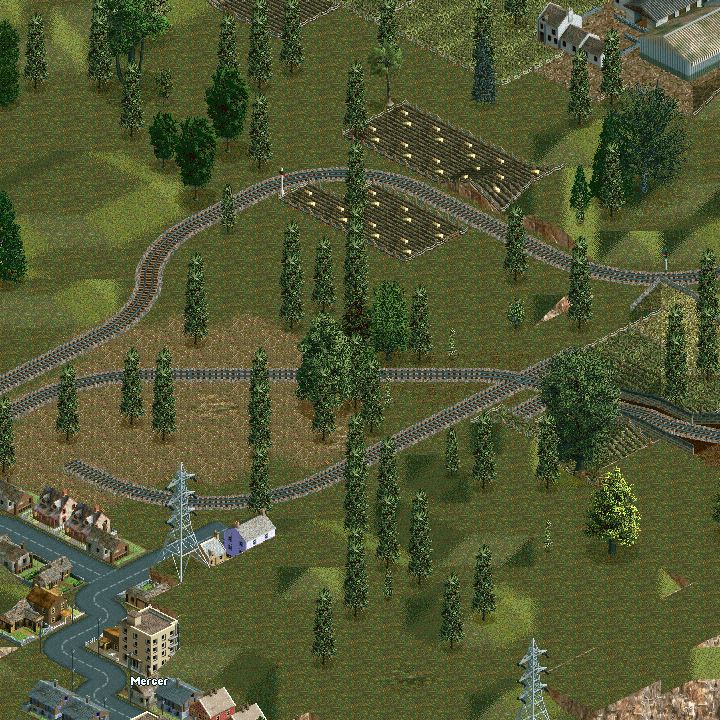  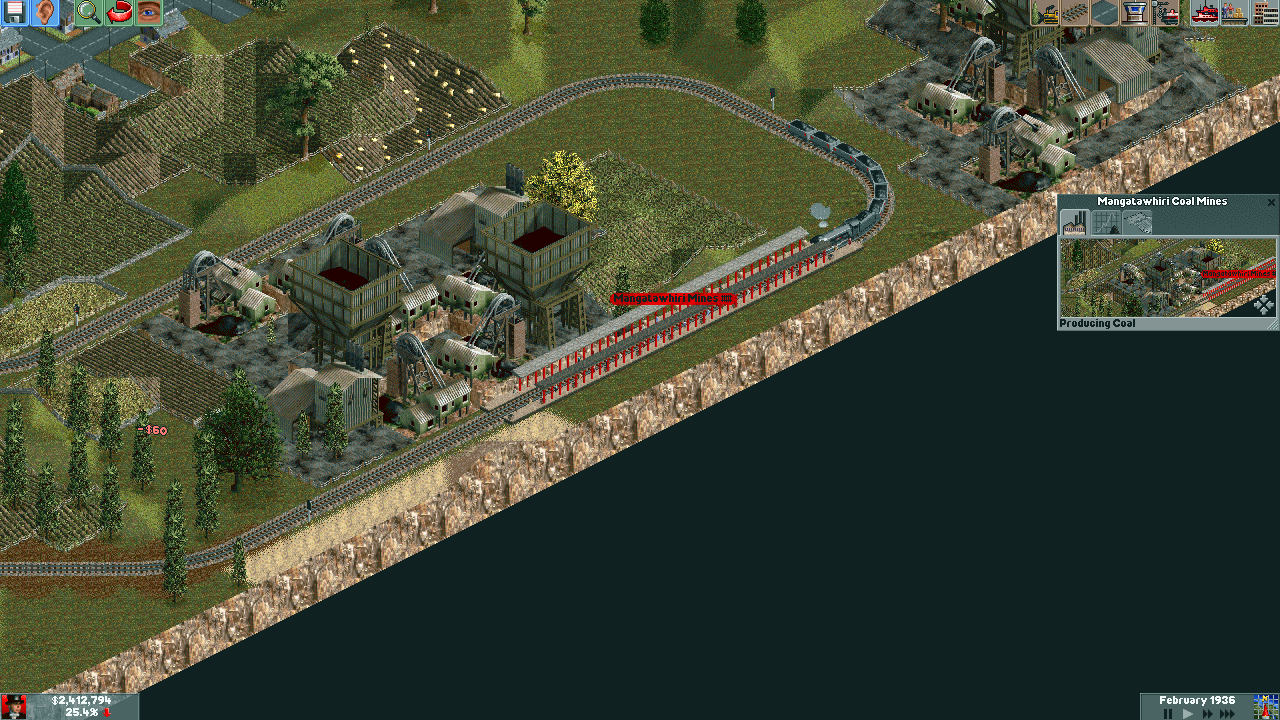 As we dig into it, we are interupted by a need to extend our southern terminus a couple of miles due to a mine closure.  Back on the Awhitu line, Yours truly bodges up this railway spiral because I just can't bear to smash down houses wantonly. It's my weakness as a player. 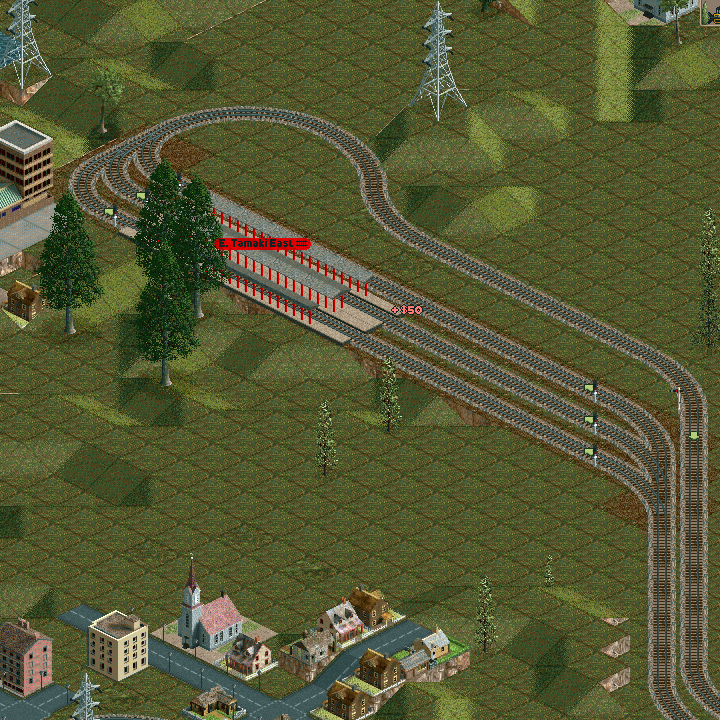 The Awhitu trains will deposit here, at East Tamaki in south Auckland. The trains will probably get confused by the route describing a giant U, but most of the other food plants are in the northern half of the map.   While finishing the route, we eliminate one of the few remaing bottlenecks on the main line. Cheaping out at the start can have long repercussions if you aren't careful. 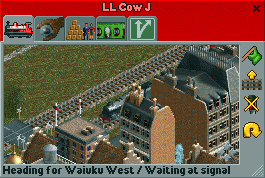  Texas carries Livestock and Passengers! Well, those passengers who don't mind sitting in front of 100 nervous cows... 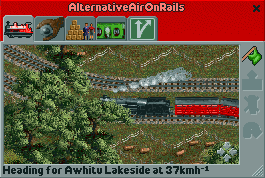 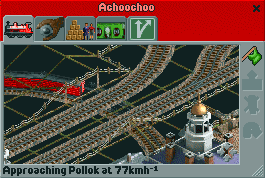 Bless you :3  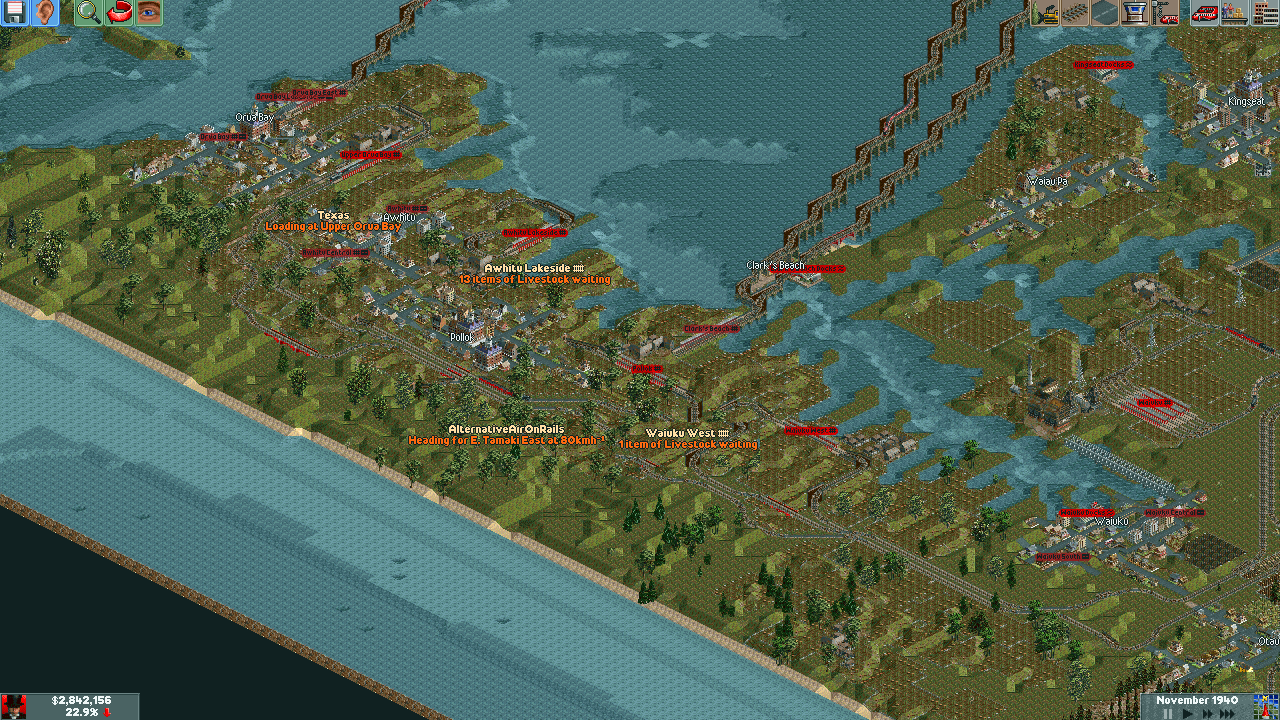 The main part of the new line. 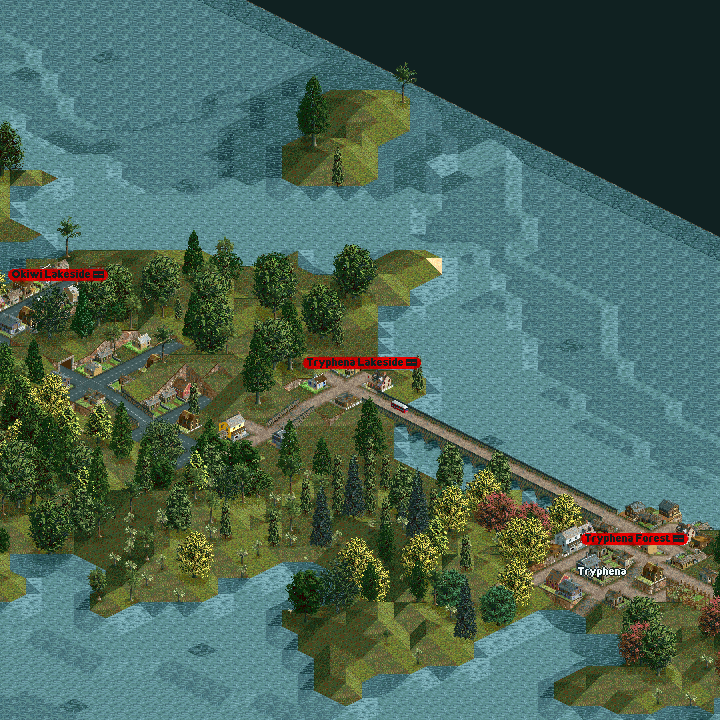 A new model of bus washes up at Great Barrier Island, replacing the oldest machine.  As 1940 dawns, improved communication links are vital, so we sell our Tante Ju's and last Fokker VII for DC-3s and extend all our runways. Even Whenuapai gets a medium airport despite being bounded by city and train viaducts. And now it's time for the News! 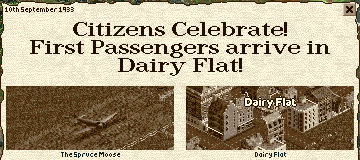    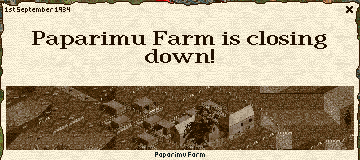 Paparimu has lost it's forest and farm. The depression has hit it hard.  Meanwhile, Auckland CBD has been slowly recovering from the smashing it recieved at the hands of Ms Eggburt. 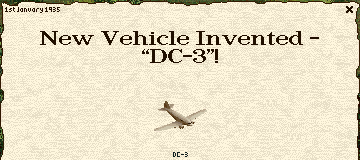 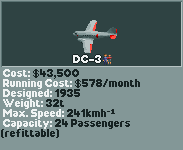  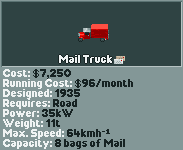 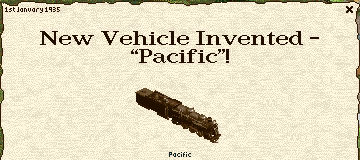 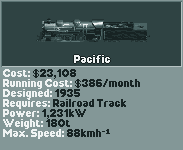 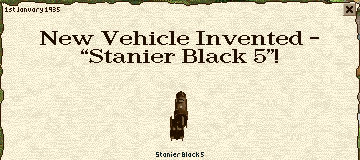 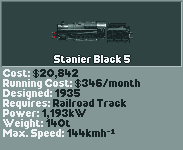 1935 is a big year for salesmen, with many shiny new toys. The mail truck turns up, five years after the others. 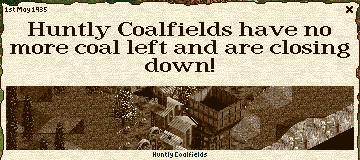 One of the few mines left in real life closes down.   This mine is about a mile from the Huntly fields that closed down. The game does this sometimes when clusters of industry exist. It closes an industry, decides to use the open slot to build another of the same type, then places it in the same cluster. 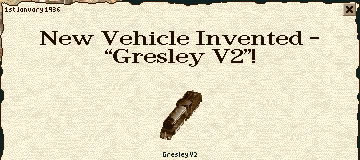    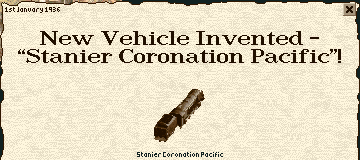  1936 has more shiny toys. Buses finally become competitive with trams.    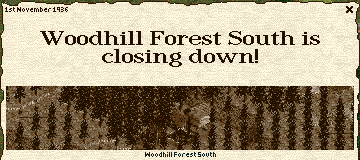    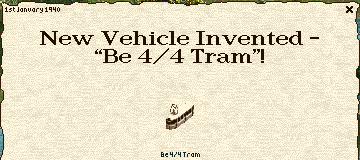 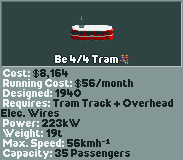 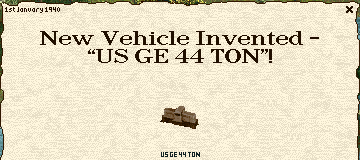 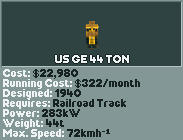 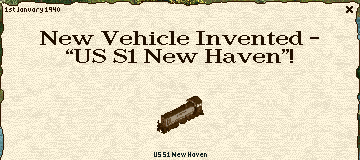  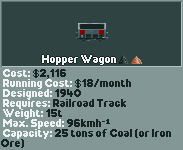 We end the update with a long anticipated tram upgrade, Diesels make their first appearances in the switching yards, and equally important, a new kind of wagon for iron and coal means that lets us carry more payload for the same size train. (And is faster!) 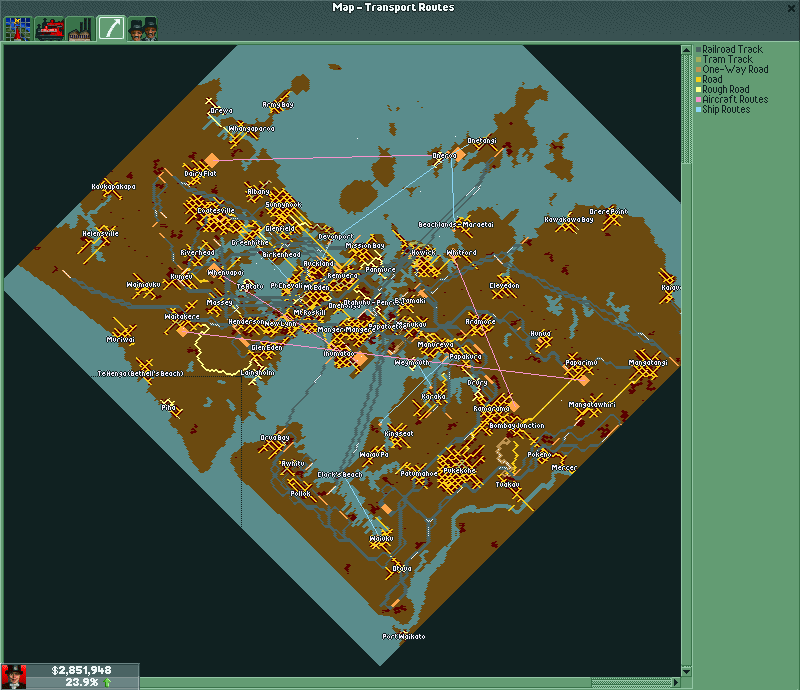  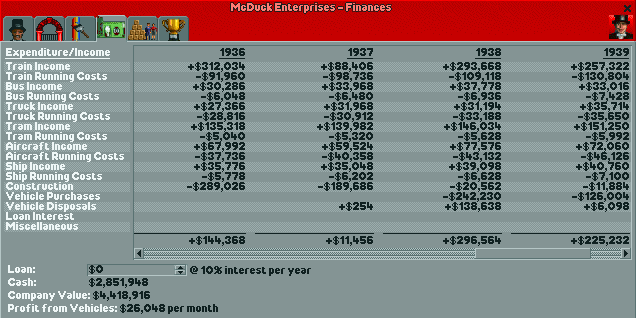
Jaguars! fucked around with this message at 10:59 on Feb 3, 2016 |
|
|
|
That's a LOT of cows. Do mines actually become exhausted eventually? Or do they, like the other businesses, close down through no one picking up their cargo and bringing them business?
|
|
|
|
Jaguars! posted:

|
|
|
|
Oh wow, three new BritTrains in one update. They're all cool ones though, so I'll get on to them as soon as I can.
|
|
|
|
Likewise, I can make some brief write-ups on the American diesel-electrics. I should be able to get those up by some time tomorrow.
|
|
|
|
 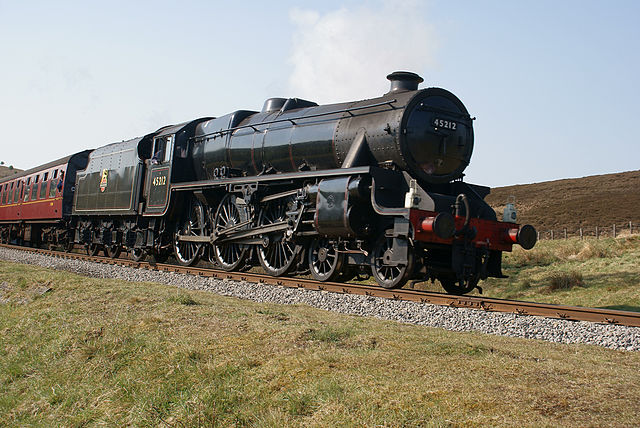 Sources: myself, Wikipedia, cooldudeandy01, The Rev W. Awdry, C. Reginald Dalby. Stanier Black Five 5P5F/5MT Company: London, Midland and Scottish Railway (LMS), and later British Railways (BR) Designer: William Stanier Wheel Arrangement: 4-6-0 First produced: 1934 Total built: 842(!) Total preserved: 18 (+ 1 fictional) Eight hundred and forty two. Only three other British locos beat that total: number 3 is Stanier's 8F heavy freight class, which topped out at 852, chiefly because of its use as the standard engine of choice during the first half of World War 2. Number 2 is the 863 examples of the GWR's 57xx class, which TT veterans will recognise as the Collett Pannier Tank (or possibly Kirby Paul Tank) - you know, the one that's like a Jinty but slightly better. Number 1 is the 957 DX Class 0-6-0 goods engines of the London and North Western Railway, all of which were sadly scrapped. Either way, 842 is still a heck of a lot of locomotives. So let's talk about them. Superficially, the Black Five looks very similar to the Jubilee: same wheel arrangement, same general shape. There are a few differences: the Black Five was a little lighter than the Jubilee, had a slightly lower boiler pressure, only two cylinders instead of three, and smaller driving wheels. The smaller driving wheels in particular are of interest, because throughout the history of loco design there's a general rule of thumb: passenger engines have fewer, bigger driving wheels, freight engines have more, smaller driving wheels. Mechanically, this translates into more speed for the passenger engines, and more driving force for the freight engines. Of course, the Black Five's wheel's are in between - because they are mixed traffic engines. The mixed traffic engine was a fairly new concept at the time, introduced with the GWR's "Hall" class, but the general concept is of a locomotive that can do anything - barring particularly express passenger (although the Black Five could still top out at around 90mph) or heavy freight work - and, ideally, go anywhere - which, with decent weight, length and axle loadings, the Black Five could also handle. They were really useful engines. That's why there were 842 of them, with production continuing into BR days. And speaking of Really Useful Engines...  . Well, I already did it for Gordon, so Henry deserves his spot in the sun too. Not that he started life as a Black Five. No-one's quite sure what he started life as, except possibly a nuisance. But following his accident with The Flying Kipper (look it was a train that transported fish, all right), he got sent to Crewe (the LMS's main locomotive depot, which produced many Black Fives itself) for a rebuild and emerged as something that was mostly a Black Five. . Well, I already did it for Gordon, so Henry deserves his spot in the sun too. Not that he started life as a Black Five. No-one's quite sure what he started life as, except possibly a nuisance. But following his accident with The Flying Kipper (look it was a train that transported fish, all right), he got sent to Crewe (the LMS's main locomotive depot, which produced many Black Fives itself) for a rebuild and emerged as something that was mostly a Black Five.The real world reason for this? C. Reginald Dalby, the illustrator of the first eleven Railway Series books, was - while a genius at backgrounds and nice, clean lines - kind of bad at drawing at consistently drawing trains. Yeah, bit of a drawback in his job. Henry in particular spent way too much time looking like Gordon, not least because in books 2 though 5, he was coloured blue. Returning him to green livery and giving him a new shape was the Rev W. Awdry's plan to help differentiate Henry from Gordon. Ultimately, relations between Awdry and Dalby broke down enough that Dalby left and John T. Kenny came in as the new illustrator for books twelve to seventeen - he may not have been as good at backgrounds as Dalby, but his engine-drawing ability and working relationship with Awdry were much better. Anyway, yeah. Black Fives. A "deuce of a good engine", as Stanier himself described them, and some of them soldiered on to the end of BR's steam traction in 1968, pulling the "15-guinea" specials that marked the end. 18 of the 842 survived into preservation, and 13 of those have seen work since then. Paul.Power fucked around with this message at 20:26 on Feb 3, 2016 |
|
|
|

|
| # ? May 23, 2024 13:19 |
|
Ah, I vaguely vaguely vaguely remember the flying kipper. My grandparents used to have a few episodes of Thomas the tank engine on home recorded tapes, usually surrounded by aerobics programs and the like.PurpleXVI posted:That's a LOT of cows. Mines work in the same way as the other businesses. It's not unknown for them to double production and then close down a few months later as the haulers struggle to deal with the load and ratings tank. Jaguars! fucked around with this message at 20:36 on Feb 3, 2016 |
|
|






